May 2013
In the news
31/05/13 04:54
I begin my days by scanning news headlines from around the world. I’m not particularly a news junkie. I don’t have to have the latest news playing in front of me all the time, and others often know of news stories before I have caught up with them. But part of my job is to interpret the scriptures in the midst of the realities of contemporary living, so I need to have a sense of what is going on in our world today to provide commentary about how our faith informs us in the midst of the complexities of modern life.
As a result, among the other notes in my journal, I collect bits and pieces of information that might be considered trivia. I will jot down something I read in the news that seems to be isolated from the other events of the day and probably not relevant to the lives of the people I serve.
Here are some examples:
Belarus is a former Soviet nation between Russia and Poland. Emergency services personnel in Belarus have reported a rash of beaver attacks. Beavers were once hunted to near extinction in Europe, but they have made quite a comeback in Belarus, where the population of beavers is estimated to be more than 80,000. With limited territory, beavers are increasingly wandering into populated areas and displaying more aggressive behavior than previously witnessed. A couple of days ago, the AP reported that a fisherman died of wounds received in a beaver attack. The fisherman wanted to be in a photo with a beaver. He grabbed the rodent by the tail to position it for the photo, but the beaver had other ideas. It turned on him and bit him several times in the upper leg. Beavers have long teeth - nearly 3 inches - and they are sharp for cutting into trees. The beaver hit an artery, the man’s friends were unable to stop the bleeding and he bled to death before he could be treated for his injuries. It is just one of many stories of aggressive beavers reported from the area.
I’ve never experienced aggressive beavers. When I try to get photographs of them, they tend to swim away from my canoe. The most aggressive thing I’ve witnessed is the slap of a beaver tail on the water. When I’m not expecting it, it can catch me by surprise. I enjoy watching the beavers and will often paddle near their lodges to admire their work. I have noticed that there are a lot more beavers and more beaver ponds in Yellowstone National Park than was the case when I was a teenager. I’m told that this is a direct result of the reintroduction of wolves to the park. The wolves decrease the elk population. The elk eat fewer willows and other tender brush alongside the creeks and streams. That means more food for beavers, so the beaver population grows.
No one really knows exactly what the appropriate balance of beavers is. Fur trappers were among the first Europeans to come into the upper plains. Since those days, humans have been the main predators of the animals. Their pelts are prized for many uses. Beaver hats are still popular in many places. I don’t think that a beaver is much good for eating. I don’t remember ever tasting their meat, but I do know that some people do cook and eat the animals. Other than humans, I don’t know if beavers suffer much predation. Their population is probably controlled by habitat and competition for food with other animals.
Maybe they just need more elk in Belarus.
Whatever happens to the beavers, I’m glad that the police have found the shark that went missing here in Rapid City. The 12-foot great white isn’t a real live animal, but a fiberglass creation. It’s normal home is Pirate’s Cove Adventure Golf, where it hangs by its tail as part of the tourist attraction.
Why anyone would steal the shark is beyond me. But then I guess I don’t have a real criminal mind. An anonymous tip led police to find the shark in a field next to the old Pizza Hut in Box Elder. Last I heard the shark was in protective custody at the evidence building and will soon be returned to Pirate’s Cove. After nearly a week of living on the run, I suppose the shark is happy to be near the end of its ordeal.
I have no clue why anyone would want to steal something that everyone else would know had been stolen. Fortunately no one was hurt in the incident, which is more than can be said for having one’s picture taken with a beaver.
Maybe we could get some superheroes from Los Angeles to come guard the shark. They apparently have too many. According to the Huffington Post a fist fight between Captain American and Spiderman erupted into a near brawl of superheroes in front of the Madame Tussauds kiosk, in front of the Dolby Theatre on Hollywood Boulevard. According to Batman, who witnessed the fight, Captain America had accused Spiderman of picking the pocket of a tourist. Superheroes picking tourists’ pockets is bad for business, when the other costumed characters depend on tips to earn their living.
I guess I never thought about how superheroes earned their living before.
I was relieved to note that Batman was not involved in the fight. Batman, as everyone knows, is independently wealthy. Presumably he doesn’t need to depend on tips from tourists to stay in the crime fighting business.
Maybe we could even send one of the superheroes to Mars to check out what appears to some people to be a rat in a picture taken by the Curiosity rover. For the life of me I can’t get it to look like a rat to my eyes. It just looks like another rock, but some guy in Japan who spends a lot of time going over NASA photos is sure that it is a creature with legs and a tail among the rocks on the planet.
I guess I won’t be too alarmed unless they find a beaver on Mars. That could definitely put a damper on tourism on the red planet.
As a result, among the other notes in my journal, I collect bits and pieces of information that might be considered trivia. I will jot down something I read in the news that seems to be isolated from the other events of the day and probably not relevant to the lives of the people I serve.
Here are some examples:
Belarus is a former Soviet nation between Russia and Poland. Emergency services personnel in Belarus have reported a rash of beaver attacks. Beavers were once hunted to near extinction in Europe, but they have made quite a comeback in Belarus, where the population of beavers is estimated to be more than 80,000. With limited territory, beavers are increasingly wandering into populated areas and displaying more aggressive behavior than previously witnessed. A couple of days ago, the AP reported that a fisherman died of wounds received in a beaver attack. The fisherman wanted to be in a photo with a beaver. He grabbed the rodent by the tail to position it for the photo, but the beaver had other ideas. It turned on him and bit him several times in the upper leg. Beavers have long teeth - nearly 3 inches - and they are sharp for cutting into trees. The beaver hit an artery, the man’s friends were unable to stop the bleeding and he bled to death before he could be treated for his injuries. It is just one of many stories of aggressive beavers reported from the area.
I’ve never experienced aggressive beavers. When I try to get photographs of them, they tend to swim away from my canoe. The most aggressive thing I’ve witnessed is the slap of a beaver tail on the water. When I’m not expecting it, it can catch me by surprise. I enjoy watching the beavers and will often paddle near their lodges to admire their work. I have noticed that there are a lot more beavers and more beaver ponds in Yellowstone National Park than was the case when I was a teenager. I’m told that this is a direct result of the reintroduction of wolves to the park. The wolves decrease the elk population. The elk eat fewer willows and other tender brush alongside the creeks and streams. That means more food for beavers, so the beaver population grows.
No one really knows exactly what the appropriate balance of beavers is. Fur trappers were among the first Europeans to come into the upper plains. Since those days, humans have been the main predators of the animals. Their pelts are prized for many uses. Beaver hats are still popular in many places. I don’t think that a beaver is much good for eating. I don’t remember ever tasting their meat, but I do know that some people do cook and eat the animals. Other than humans, I don’t know if beavers suffer much predation. Their population is probably controlled by habitat and competition for food with other animals.
Maybe they just need more elk in Belarus.
Whatever happens to the beavers, I’m glad that the police have found the shark that went missing here in Rapid City. The 12-foot great white isn’t a real live animal, but a fiberglass creation. It’s normal home is Pirate’s Cove Adventure Golf, where it hangs by its tail as part of the tourist attraction.
Why anyone would steal the shark is beyond me. But then I guess I don’t have a real criminal mind. An anonymous tip led police to find the shark in a field next to the old Pizza Hut in Box Elder. Last I heard the shark was in protective custody at the evidence building and will soon be returned to Pirate’s Cove. After nearly a week of living on the run, I suppose the shark is happy to be near the end of its ordeal.
I have no clue why anyone would want to steal something that everyone else would know had been stolen. Fortunately no one was hurt in the incident, which is more than can be said for having one’s picture taken with a beaver.
Maybe we could get some superheroes from Los Angeles to come guard the shark. They apparently have too many. According to the Huffington Post a fist fight between Captain American and Spiderman erupted into a near brawl of superheroes in front of the Madame Tussauds kiosk, in front of the Dolby Theatre on Hollywood Boulevard. According to Batman, who witnessed the fight, Captain America had accused Spiderman of picking the pocket of a tourist. Superheroes picking tourists’ pockets is bad for business, when the other costumed characters depend on tips to earn their living.
I guess I never thought about how superheroes earned their living before.
I was relieved to note that Batman was not involved in the fight. Batman, as everyone knows, is independently wealthy. Presumably he doesn’t need to depend on tips from tourists to stay in the crime fighting business.
Maybe we could even send one of the superheroes to Mars to check out what appears to some people to be a rat in a picture taken by the Curiosity rover. For the life of me I can’t get it to look like a rat to my eyes. It just looks like another rock, but some guy in Japan who spends a lot of time going over NASA photos is sure that it is a creature with legs and a tail among the rocks on the planet.
I guess I won’t be too alarmed unless they find a beaver on Mars. That could definitely put a damper on tourism on the red planet.
Copyright © 2013 by Ted Huffman. I wrote this. If you want to copy it, please ask for permission. There is a contact me button at the bottom of this page. If you want to share my blog a friend, please direct your friend to my web site.
Lots of Water
30/05/13 05:44

We like to complain about the weather around here. Sometimes our complaints sound like bragging, however. I think that part of what we like about living where we do is that some people think that it is a harsh environment where it is a struggle to live. When folks from some other part of the country ask about the snow, we try to dig up (pun intended) our best blizzard stories. When they ask about wildfires, we cite the ones that came closest.
For a couple of years we have been living in the midst of drought. The woods were crackly dry and when you waked through the forest, it was impossible to do so silently. The bark beetle infestation has killed so many trees in the hills, that we look instinctively to certain hillsides, almost expecting to see them go up in flames soon. Our winter last year was almost totally open, with just a few spring blizzards to provide enough snow to cover up the dry, brown hillsides and fields.
But the weather in the hills can change suddenly, and the dry spring and long summer that we expected is turning out to be a wet spring. It has been hinting of rain for most of the week, with fog and mist and cloudy skies. Yesterday, we got the rain. Thunderstorms parked over the hills and let loose with hard rain that persisted. All you had to do was go outside and stand in any minor depression in the hills and you instantly knew the meaning of “gully washer.” The streets in town were filled with streams carrying lots of mud and debris from the hills. If it hadn’t been raining so hard, the puddles and streams running down the streets would have been irresistible to the neighborhood children.
We’ve got rain in the forecast for the rest of the week and the National Weather Service has posted a flash flood warning for most of the hills. Rapid Creek, which normally meanders through the city within its modest banks, has turned into a raging torrent. After much experience with devastating floods, including the 1972 flood that devastated the city, Rapid City has a well-developed flood plain and the creek can roar through town without causing much damage. It is impressive to see how much water goes past. You get a picture of why the bridges are so wide in places where normally a small culvert would contain the entire creek.
Add to the thunderstorms and high water the predictions of high winds and today may produce some weather that we can tell stories about for years to come. Telling about how we survived severe weather is a favorite pastime around here. We are a resilient people and see ourselves as survivors, so we are always looking for good weather stories to tell. From time to time the weather cooperates and gives us the stories.
Last evening we headed into town after supper to check on the newsletter that was being printed. The rain was falling hard enough to have the wipers running on high and our speed reduced in order to maintain visibility on very familiar streets. We avoided Jackson Boulevard, which is under construction and has lots of places for the water to pool. The steep streets around the church were running like small streams and things looked pretty dramatic. That’s one of the things about the hills. When we get water, there is nowhere for it to go but down and it quickly runs off and spreads out across the plains.
I’m going to make a run up to Bridger today to return a tipi that was borrowed for the Taize gathering last weekend. My route doesn’t take me close to too many creeks, but I will get to get a good look at the Belle Fourche River where it crosses under New Underwood Raod. It should have gained a pretty good head of steam by then. The Bell is supposed to be causing flooding upstream in the city of Belle Fourche, and there are plenty of places for more water to run into it by the time it gets out to the prairie. There is lots of room for the river to spread out when it gets into the open country.
Bridger sits right next to the Cheyenne River and it can spread out into the cottonwoods and look like quite a torrent when it floods as well. I don’t have to cross the Cheyenne, but it might be worth driving down to the bridge tot get a look as long as I’m going to be that close.
The Rapid City Journal has a collection of flood pictures submitted by readers on its web site that show lots of muddy water running down the streets, through the creek bed and in other places. I suspect that we’ll have more pictures and stories to tell by the end of the week.
The pictures and stories may prove to be useful to us as we face the summer. Despite the fact that we have too much water at the moment, we know that the way it is now is not the story of the entire year. The rains can run off, the soil can become dry again and the woods can threaten fire after just a few weeks of warm dry weather. By August we could be sniffing the air for smoke.
But for now it is good to give the firefighters a bit of a break. They won’t have to be on the highest alert to put out fires. They do, however, have to be on alert for people who get into trouble with the water. Young drivers might think it is fun to go through the puddles and make big splashes. They might learn how easy it is to lose control of a vehicle. People are often driving into water that is too deep for their vehicle. I once read that one of the biggest dangers in times of flooding is driving cars where they won’t go.
So be careful out there. We’re counting on you to stay safe. But get out of the car long enough to get wet and remember the feeling. By the end of the summer, I’m thinking we’ll want to remember what it is like.
Copyright © 2013 by Ted Huffman. I wrote this. If you want to copy it, please ask for permission. There is a contact me button at the bottom of this page. If you want to share my blog a friend, please direct your friend to my web site.
Sixty
29/05/13 04:35
Over the years, formal and informal Biblical scholars have paid a huge amount of attention to numbers in the Bible. The number 7 is a big one. There are seven days of creation, the Sabbath laws are based on the seventh day, the jubilee is based on 7 x 7 (49 years, then the jubilee), Jesus tells Peter that he should forgive another 77 times (or 7 x 70, depending on which translation you read). You get the picture. Someone has even counted that there are 783,137 words in the King James Bible. I suppose someone has counted out how many times each individual word has been used as well. 40 is another big Bible number: 40 days and nights of rain, 40 years in the wilderness.
Although 666 has gotten some bad press among certain Biblical scholars, while others maintain that the use of that particular number is a translation and interpretation error, the number 60 doesn’t get much attention. Isaac is said to be 60 when Jacob and Esau were born. That’s younger than Abraham when Isaac was born. It is also the number of warrior escorting King Solomon at one point.
When the people of Israel were taken into captivity in Babylon, among the attempts at wiping out their cultural heritage was the imposition of the Babylonian number system. Israel, like the majority of its neighbors counted and did mathematical operations in a base 10 system. Babylon employed a base 60 system, making mathematics very difficult and the domain of scholars. The Babylonians inherited this mathematical system from the Sumerian and Akkadian civilizations and it was probably motivated by the large number of divisors which 60 has. The sexagesimal measurement of time (60 seconds in a minute, 60 minutes in an hour) and of geometric angles (360 degrees in a circle) are legacies of the Babylonian number system that persist to this day. It goes to show that contemporary ways of measuring time may not be the best way to interpret all Biblical times and dates.
60 remains an interesting number, especially as I anticipate my 60th birthday approaching. Because 60 is three times 20, it is considered to be three score in some places in literature. The number 60 is divisible by all of the numbers one through 6 and it is the smallest number divisible by all of those numbers. It is even the smallest number divisible by all of the numbers 1 through 5.
In the next 60 seconds 2,780,000 videos will be watched on YouTube. Over 100 hours of new videos will be uploaded to that channel. 204,000,000 e-mail messages will be sent, of which 132,600,000 will be spam. In the next 60 seconds, Amazon.com will sell $83,000 worth of merchandise. There will be 278,000 tweets posted and FaceBook will log 1, 875,000 likes. In the next 60 seconds, Wikipedia will grow by 6 new articles and Google will process over 2,000,000 Internet searches. A U.S. minimum wage earner makes about 12 cents in 60 seconds, while Rick Tillinson, CEO of Exxon-Mobil makes about $19.13 per 60 seconds.
When we slow down to 60 minutes, most people my age will think of the CBS news magazine television show that first ran in 1968, featuring Harry Reasoner and Mike Wallace. They really started the era of “gotcha” journalism. And it is hard to think of 60 minutes without Andy Rooney’s 3-minute rants.
Sixty days is a couple of months and often considered to be a more than generous amount of time to give notice that you are quitting a job. 60 weeks is more than a year. And 60 months is a long term for an automobile loan, although I heard that the bank will now give auto loans up to 8 years!
60 years is long enough to be considered old, though not everyone considers a 60-year old to be a senior citizen, and few consider a 60-year old to be truly wise. 60 is a hard age to be job searching according to statistics from the Federal government. Employers prefer to hire people who are younger than 60 in most cases, though there is some evidence that 60-somethings are now taking jobs that once were the domain of teenage workers.
In the end, 60 I like any other number. It is just another step in counting, We may notice some numbers more than others simply because they have unique properties. Turning an age that ends in zero brings one to thinking about the passage of decades as well as years.
So I welcome turning sixty. Like all of the other decades of my life, I suspect that the years between 60 and 70 will bring new adventures, new discoveries and new ideas. I expect that I will make at least one major big change in my life and since graduation with a new degree is unlikely, I suspect that the event of this decade will be retirement. I have been joking that I ought to have a label that says “Best if used by June 15, 2020.” That is an arbitrary number, but it will be my 67th birthday. I’m suspecting that there will at least be some cutting back around that time. The date will mark, for me, 50 years since I moved away from the home of my parents.
But there is another thing about that date that is meaningful to me. I started a practice, back during my college years, that has remained with me to this day. During my college and graduate school years I always had a part time job. There were a host of part-time jobs from working in the library, to doing janitorial services, to serving as a licensed lay minister, to working with youth groups. I worked in a counseling center, and I re-worked 250 rush bottomed chairs for a church one year. I refinished furniture and I drove truck. After I graduated, I continued to work part time during my first call to ministry. I was a school bus driver and a radio DJ and later earned money doing free-lance newspaper work and writing professionally. Here in Rapid City the work with the church consumes much of my time and always takes more than 40 hours per week.
Age 67 will mark 50 years of mostly 60-hour workweeks for me. I’m considering cutting back to 50 after that time. But that is 7 years from now. For now, I’m only turning 60 and there is no need to rush things.
Although 666 has gotten some bad press among certain Biblical scholars, while others maintain that the use of that particular number is a translation and interpretation error, the number 60 doesn’t get much attention. Isaac is said to be 60 when Jacob and Esau were born. That’s younger than Abraham when Isaac was born. It is also the number of warrior escorting King Solomon at one point.
When the people of Israel were taken into captivity in Babylon, among the attempts at wiping out their cultural heritage was the imposition of the Babylonian number system. Israel, like the majority of its neighbors counted and did mathematical operations in a base 10 system. Babylon employed a base 60 system, making mathematics very difficult and the domain of scholars. The Babylonians inherited this mathematical system from the Sumerian and Akkadian civilizations and it was probably motivated by the large number of divisors which 60 has. The sexagesimal measurement of time (60 seconds in a minute, 60 minutes in an hour) and of geometric angles (360 degrees in a circle) are legacies of the Babylonian number system that persist to this day. It goes to show that contemporary ways of measuring time may not be the best way to interpret all Biblical times and dates.
60 remains an interesting number, especially as I anticipate my 60th birthday approaching. Because 60 is three times 20, it is considered to be three score in some places in literature. The number 60 is divisible by all of the numbers one through 6 and it is the smallest number divisible by all of those numbers. It is even the smallest number divisible by all of the numbers 1 through 5.
In the next 60 seconds 2,780,000 videos will be watched on YouTube. Over 100 hours of new videos will be uploaded to that channel. 204,000,000 e-mail messages will be sent, of which 132,600,000 will be spam. In the next 60 seconds, Amazon.com will sell $83,000 worth of merchandise. There will be 278,000 tweets posted and FaceBook will log 1, 875,000 likes. In the next 60 seconds, Wikipedia will grow by 6 new articles and Google will process over 2,000,000 Internet searches. A U.S. minimum wage earner makes about 12 cents in 60 seconds, while Rick Tillinson, CEO of Exxon-Mobil makes about $19.13 per 60 seconds.
When we slow down to 60 minutes, most people my age will think of the CBS news magazine television show that first ran in 1968, featuring Harry Reasoner and Mike Wallace. They really started the era of “gotcha” journalism. And it is hard to think of 60 minutes without Andy Rooney’s 3-minute rants.
Sixty days is a couple of months and often considered to be a more than generous amount of time to give notice that you are quitting a job. 60 weeks is more than a year. And 60 months is a long term for an automobile loan, although I heard that the bank will now give auto loans up to 8 years!
60 years is long enough to be considered old, though not everyone considers a 60-year old to be a senior citizen, and few consider a 60-year old to be truly wise. 60 is a hard age to be job searching according to statistics from the Federal government. Employers prefer to hire people who are younger than 60 in most cases, though there is some evidence that 60-somethings are now taking jobs that once were the domain of teenage workers.
In the end, 60 I like any other number. It is just another step in counting, We may notice some numbers more than others simply because they have unique properties. Turning an age that ends in zero brings one to thinking about the passage of decades as well as years.
So I welcome turning sixty. Like all of the other decades of my life, I suspect that the years between 60 and 70 will bring new adventures, new discoveries and new ideas. I expect that I will make at least one major big change in my life and since graduation with a new degree is unlikely, I suspect that the event of this decade will be retirement. I have been joking that I ought to have a label that says “Best if used by June 15, 2020.” That is an arbitrary number, but it will be my 67th birthday. I’m suspecting that there will at least be some cutting back around that time. The date will mark, for me, 50 years since I moved away from the home of my parents.
But there is another thing about that date that is meaningful to me. I started a practice, back during my college years, that has remained with me to this day. During my college and graduate school years I always had a part time job. There were a host of part-time jobs from working in the library, to doing janitorial services, to serving as a licensed lay minister, to working with youth groups. I worked in a counseling center, and I re-worked 250 rush bottomed chairs for a church one year. I refinished furniture and I drove truck. After I graduated, I continued to work part time during my first call to ministry. I was a school bus driver and a radio DJ and later earned money doing free-lance newspaper work and writing professionally. Here in Rapid City the work with the church consumes much of my time and always takes more than 40 hours per week.
Age 67 will mark 50 years of mostly 60-hour workweeks for me. I’m considering cutting back to 50 after that time. But that is 7 years from now. For now, I’m only turning 60 and there is no need to rush things.
Copyright © 2013 by Ted Huffman. I wrote this. If you want to copy it, please ask for permission. There is a contact me button at the bottom of this page. If you want to share my blog a friend, please direct your friend to my web site.
By the River
28/05/13 04:46
For the last two nights I have gone to sleep with the sound of the river outside of my camper. I hear the river when I wake in the night and it is still there when I rise in the morning. The sound is familiar and comforting. It is, for me, the sound of home. My camper is parked in the yard of the place where we spent our childhood summers - a property that, for a while, is in the family and partially my responsibility. I come to the place each spring to turn on the water and each autumn to turn off the pump and drain the pipes so things don’t freeze up during the cold Montana winters. I have a lot of memories that are associated with this place, and more than a small amount of nostalgia when I think of it. But I have never been attached to a single place. My vocation has called me to serve in many places and taught me that my true home is not defined by titles and deeds and plats and maps. My true home is not a matter of real estate.
But my life has been shaped by the places where I have lived. More than that, it seems to me as I listen to the river’s roar, as surely as the waters have formed the shapes of the land, my life has been shaped by rivers.
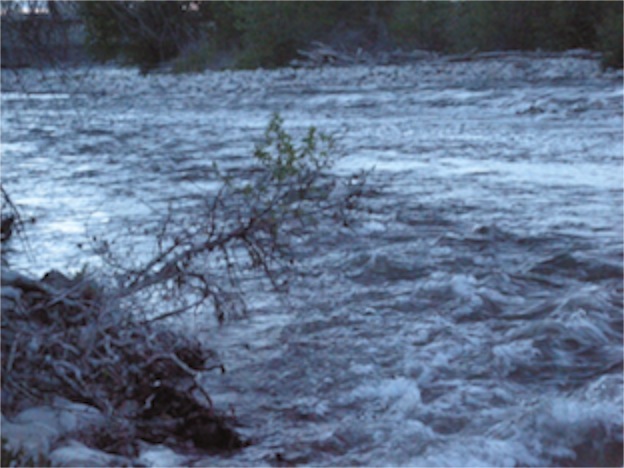 The Boulder River gets its name from the rocks that form its bed. But it could easily have also been named for the sound of those rocks as they crash against each other. The streambed is not a static entity, but rather is constantly in motion as the rocks roll and tumble down from the mountains. As they move beneath the surface of the water, their rough edges are rounded and, by the time they reach this place, nearly 50 miles from the edge of the snowmelt in the mountains, the rocks are all smooth and sculpted into ovoids and spheres. The water starts in the mountains as crystal clear snow melt. But dip a glassful from the river as it goes by this place and the sediment will quickly fall to the bottom of the glass. It is only muddy during the peak of high water. But year round, there is constant sediment that is not brown, but rather a gray-green. It is rock dust – tiny particles that break off of the rocks as they roll and tumble beneath the surface. When the rocks become small enough the gravel collects in eddies and riffles and shallow spots. These are the places where the brown and rainbow trout come to lay their eggs. The fish return to the area where they were spawned, but the gravel is constantly changing. And the river is re-shaping itself.
The Boulder River gets its name from the rocks that form its bed. But it could easily have also been named for the sound of those rocks as they crash against each other. The streambed is not a static entity, but rather is constantly in motion as the rocks roll and tumble down from the mountains. As they move beneath the surface of the water, their rough edges are rounded and, by the time they reach this place, nearly 50 miles from the edge of the snowmelt in the mountains, the rocks are all smooth and sculpted into ovoids and spheres. The water starts in the mountains as crystal clear snow melt. But dip a glassful from the river as it goes by this place and the sediment will quickly fall to the bottom of the glass. It is only muddy during the peak of high water. But year round, there is constant sediment that is not brown, but rather a gray-green. It is rock dust – tiny particles that break off of the rocks as they roll and tumble beneath the surface. When the rocks become small enough the gravel collects in eddies and riffles and shallow spots. These are the places where the brown and rainbow trout come to lay their eggs. The fish return to the area where they were spawned, but the gravel is constantly changing. And the river is re-shaping itself.
The big changes of the river come in the spring with high water. Depending on the weather, the snow can melt quickly and spring rains can swell the river to four or five times the volume of water that flows at the end of the summer. When this happens, the river cuts away the banks on the outside of the curves. Large chunks of soil are swept away. The roots of the cottonwood trees are exposed. And, from time to time, the giant trees fall into the river. In the boulder the upstream ends of islands are collecting points for the fallen trees. Their branches and roots crack and crunch under the pressure of the water. Sometimes even the giant trunks snap under the power of the river. When they are washed to the Yellowstone, the become sleepers in the bigger river, floating beneath the surface. Other than a few irrigation diversions, the water from our river doesn’t meet a dam until it has flowed into the Missouri and entered North Dakota. A tree felled by spring flooding can end up as driftwood anywhere between the inside of a bend here and the slow waters behind Garrison Dam 400 miles downstream.
 But this isn’t the only river that has shaped my life. Like the rocks and trees, I started by flowing downstream. My college years were spend not far from the Yellowstone River. It is a bigger river, though not too large to swim across if you know what you are doing and understand rivers. It has claimed the lives of those who thought they could defeat its flow. But if you allow yourself to be swept downstream, you can cross it. The Yellowstone is a great wild and free river that flows from Yellowstone Lake in Yellowstone National Park and gathers most of the tributaries from the east of the divide in the park. It flows through emigrant and paradise valley, appropriately named, and makes the big bend at the gates of the mountains at the town of Livingston. If you stand on the shore of the river at that bend, you will always feel the wind. In fact, it is impossible which is a more persistent and powerful force, the wind or the water. In that part of the world they are a pair of forces that cannot be denied and that punish those who think they can be defeated. 30 miles downstream from the gates, the Boulder empties into the Yellowstone. By Billings, where I went to college, it has also gained the Stillwater and Rock Creek and a lot of smaller tributaries.
But this isn’t the only river that has shaped my life. Like the rocks and trees, I started by flowing downstream. My college years were spend not far from the Yellowstone River. It is a bigger river, though not too large to swim across if you know what you are doing and understand rivers. It has claimed the lives of those who thought they could defeat its flow. But if you allow yourself to be swept downstream, you can cross it. The Yellowstone is a great wild and free river that flows from Yellowstone Lake in Yellowstone National Park and gathers most of the tributaries from the east of the divide in the park. It flows through emigrant and paradise valley, appropriately named, and makes the big bend at the gates of the mountains at the town of Livingston. If you stand on the shore of the river at that bend, you will always feel the wind. In fact, it is impossible which is a more persistent and powerful force, the wind or the water. In that part of the world they are a pair of forces that cannot be denied and that punish those who think they can be defeated. 30 miles downstream from the gates, the Boulder empties into the Yellowstone. By Billings, where I went to college, it has also gained the Stillwater and Rock Creek and a lot of smaller tributaries.
By the standards of the state where I was born, Billings is the major urban center. But it isn’t much of a city when compared to Chicago where we next moved. Chicago rests along the shores of Lake Michigan where its residents cannot deny the hugeness of the natural world. The lake they use but do not alter. Turn your back on the lake, however, and people convince themselves that they are in charge. A system of locks and dikes allows the flow of the Chicago River to be temporarily reversed. On St’ Patrick’s Day they dye the river green. Most of the rest of the time it is so tame and calm that it could hardly be called a river by the standards of those alongside of which I grew into adulthood. There aren’t many rocks ground to dust under the Chicago River. A glass dipped into it would yield more algae and green growing junk than rock dust.
Since those days I have lived in dry places, where we sometimes have to call little creeks rivers because that is all we have. But the waters continue to shape my life. No one who was in Rapid City in 1972 will ever doubt the power of water.
But that is another story for another day.
Today I am grateful to wake to the sound of the river. More than 40 years since I moved from this place, the water still sings to me and stirs my soul.
But my life has been shaped by the places where I have lived. More than that, it seems to me as I listen to the river’s roar, as surely as the waters have formed the shapes of the land, my life has been shaped by rivers.

The big changes of the river come in the spring with high water. Depending on the weather, the snow can melt quickly and spring rains can swell the river to four or five times the volume of water that flows at the end of the summer. When this happens, the river cuts away the banks on the outside of the curves. Large chunks of soil are swept away. The roots of the cottonwood trees are exposed. And, from time to time, the giant trees fall into the river. In the boulder the upstream ends of islands are collecting points for the fallen trees. Their branches and roots crack and crunch under the pressure of the water. Sometimes even the giant trunks snap under the power of the river. When they are washed to the Yellowstone, the become sleepers in the bigger river, floating beneath the surface. Other than a few irrigation diversions, the water from our river doesn’t meet a dam until it has flowed into the Missouri and entered North Dakota. A tree felled by spring flooding can end up as driftwood anywhere between the inside of a bend here and the slow waters behind Garrison Dam 400 miles downstream.

By the standards of the state where I was born, Billings is the major urban center. But it isn’t much of a city when compared to Chicago where we next moved. Chicago rests along the shores of Lake Michigan where its residents cannot deny the hugeness of the natural world. The lake they use but do not alter. Turn your back on the lake, however, and people convince themselves that they are in charge. A system of locks and dikes allows the flow of the Chicago River to be temporarily reversed. On St’ Patrick’s Day they dye the river green. Most of the rest of the time it is so tame and calm that it could hardly be called a river by the standards of those alongside of which I grew into adulthood. There aren’t many rocks ground to dust under the Chicago River. A glass dipped into it would yield more algae and green growing junk than rock dust.
Since those days I have lived in dry places, where we sometimes have to call little creeks rivers because that is all we have. But the waters continue to shape my life. No one who was in Rapid City in 1972 will ever doubt the power of water.
But that is another story for another day.
Today I am grateful to wake to the sound of the river. More than 40 years since I moved from this place, the water still sings to me and stirs my soul.
Copyright © 2013 by Ted Huffman. I wrote this. If you want to copy it, please ask for permission. There is a contact me button at the bottom of this page. If you want to share my blog a friend, please direct your friend to my web site.
Memorial Day 2013
27/05/13 05:25
Nearly 50 years ago, President Lyndon Johnson declared that Waterloo, N.Y. was the birthplace of Memorial Day. In truth, it is more likely that there were many different memorial days and observances of memory in many different places before the official holiday was observed. The exact origins of Memorial Day will probably never been known, but it is clear that our modern observances have deep roots in the grief and loss that surrounded the Civil War. Even before that war had reached its conclusion, organized women’s groups were decorating the graves of the war dead. This was particularly true in the south. A hymn published in 1867, “Kneel Where Our Loves are Sleeping” by Nella L. Sweet carried a dedication “To The Ladies of the South who are Decorating the Graves of the Confederate Dead.”
The first official order proclaiming Memorial Day was issued by General John Logan on May 5, 1868, and was observed on May 30 of that year. The center of that observance was Arlington National Cemetery. This national military cemetery was begun in 1864 on the grounds of the home that had been the residence of Robert E. Lee prior to the Civil War. There are different opinions on how the land came to be owned by the Army. Some say that it was ceased for unpaid taxes. Others say it was confiscated. Whatever the whole story reveals, it is critically important to our country that the cemetery became the final resting place of the remains of both Union and Confederate soldiers. There are now more than a quarter of a million soldiers buried in the cemetery, but it was much smaller in 1868. General Logan’s order to decorate the graves by placing flowers on both Union and Confederate soldiers was an important step in a very slow process of recovering from the horror and grief of that war. New York observed a Memorial Day holiday in 1873 and by 1890 it was observed in all of the Northern States.
In his second inaugural address, President Lincoln invited us to the serious work of recovery from the war: “With malice toward none, with charity for all, with firmness in the right as God gives us to see the right, let us strive on to finish the work we are in, to bind up the nation's wounds, to care for him who shall have borne the battle and for his widow and his orphan, to do all which may achieve and cherish a just and lasting peace among ourselves and with all nations.”
But the pain of the war continued. Southern states refused to recognize the northern Memorial Day holiday for half a century. Different states had different holidays to remember the Confederate war dead.
World War 1 changed all of that. Once again our nation was veiled in the grief of the loss of soldiers in war. This time it was a war against a foreign government. Northern and Southern soldiers fought and died side by side. In 1915, inspired by the poem “In Flanders Fields,” Monia Michael replied with her own verse:
“We cherish too, the Poppy red
That grows on fields where valor led,
It seems to signal to the skies
That blood of heroes never dies.”
The wearing of red poppies in honor of those who died serving the nation grew from that verse. Monia Michael was the first to wear one and then she began selling them to benefit wounded warriors. In 1922, the Veterans of Foreign Wars organized the first nation-wide program of selling poppies. Poppies were also sold in various European countries, most notably in Belgium and France where the proceeds from the sales went to support war orphans.
Memory is an incredibly important part of the process of recovery from grief. Our memories provide a way of connection with those who have been lost. The stories we tell shape our character as we go forth and recover from the loss. But Memorial Day is much deeper than an honoring of those who have died. Memorial Day is also a day to recommit to the living.
We are all shaped by the experiences of our own lives. My age cohort in the United States will always have part of our identity in the Vietnam War. That conflict wasn’t popular. Too many soldiers died without a reasonable explanation of why we were fighting that war. Too many politicians played loose and fast with the honor and lives of soldiers. What is worse, too many people want to forget that the war was part of our history. Those who served, like all who have known the horrors of war, were forever changed by the experience. But popular culture wanted to move on. Politicians wanted to forget. Vietnam veterans have suffered gravely since they returned from that conflict. It has taken nearly 40 years for those injured by Agent Orange to receive acknowledgement that their injuries were war-related. Only after the veterans began to return from the war in Iraq did the Veteran’s Administration begin to understand Post Traumatic Stress Syndrome. By that time there were as many Vietnam era veterans who were homeless as had died in the war.
For a vet whose life was destroyed by the war and the experiences that followed, living on the street in a cardboard box, eating meals at rescue missions and diving in dumpsters to survive, it is impossible to feel remembered on Memorial Day.
If we are to truly be faithful to the spirit of this day, we must do more than wave flags, watch parades and eat barbecue. We must do more than pay lip service to honoring those who served. The memory of the losses of war must include not only the decoration of graves, but also a rededication to meeting the needs of those who returned from war wounded. And not all wounds are visible. Not all disabilities involve the loss of limbs.
So I hesitate to wish anyone “Happy Memorial Day.” Perhaps it is more appropriate to say, “May your Memorial Day be meaningful.” Possibly it isn’t the words we say that make this memorial meaningful as much as the things we do to honor those who served. There is yet much work to be done.
Memorial Day is not just one day. It is a lifetime commitment. We will never forget.
The first official order proclaiming Memorial Day was issued by General John Logan on May 5, 1868, and was observed on May 30 of that year. The center of that observance was Arlington National Cemetery. This national military cemetery was begun in 1864 on the grounds of the home that had been the residence of Robert E. Lee prior to the Civil War. There are different opinions on how the land came to be owned by the Army. Some say that it was ceased for unpaid taxes. Others say it was confiscated. Whatever the whole story reveals, it is critically important to our country that the cemetery became the final resting place of the remains of both Union and Confederate soldiers. There are now more than a quarter of a million soldiers buried in the cemetery, but it was much smaller in 1868. General Logan’s order to decorate the graves by placing flowers on both Union and Confederate soldiers was an important step in a very slow process of recovering from the horror and grief of that war. New York observed a Memorial Day holiday in 1873 and by 1890 it was observed in all of the Northern States.
In his second inaugural address, President Lincoln invited us to the serious work of recovery from the war: “With malice toward none, with charity for all, with firmness in the right as God gives us to see the right, let us strive on to finish the work we are in, to bind up the nation's wounds, to care for him who shall have borne the battle and for his widow and his orphan, to do all which may achieve and cherish a just and lasting peace among ourselves and with all nations.”
But the pain of the war continued. Southern states refused to recognize the northern Memorial Day holiday for half a century. Different states had different holidays to remember the Confederate war dead.
World War 1 changed all of that. Once again our nation was veiled in the grief of the loss of soldiers in war. This time it was a war against a foreign government. Northern and Southern soldiers fought and died side by side. In 1915, inspired by the poem “In Flanders Fields,” Monia Michael replied with her own verse:
“We cherish too, the Poppy red
That grows on fields where valor led,
It seems to signal to the skies
That blood of heroes never dies.”
The wearing of red poppies in honor of those who died serving the nation grew from that verse. Monia Michael was the first to wear one and then she began selling them to benefit wounded warriors. In 1922, the Veterans of Foreign Wars organized the first nation-wide program of selling poppies. Poppies were also sold in various European countries, most notably in Belgium and France where the proceeds from the sales went to support war orphans.
Memory is an incredibly important part of the process of recovery from grief. Our memories provide a way of connection with those who have been lost. The stories we tell shape our character as we go forth and recover from the loss. But Memorial Day is much deeper than an honoring of those who have died. Memorial Day is also a day to recommit to the living.
We are all shaped by the experiences of our own lives. My age cohort in the United States will always have part of our identity in the Vietnam War. That conflict wasn’t popular. Too many soldiers died without a reasonable explanation of why we were fighting that war. Too many politicians played loose and fast with the honor and lives of soldiers. What is worse, too many people want to forget that the war was part of our history. Those who served, like all who have known the horrors of war, were forever changed by the experience. But popular culture wanted to move on. Politicians wanted to forget. Vietnam veterans have suffered gravely since they returned from that conflict. It has taken nearly 40 years for those injured by Agent Orange to receive acknowledgement that their injuries were war-related. Only after the veterans began to return from the war in Iraq did the Veteran’s Administration begin to understand Post Traumatic Stress Syndrome. By that time there were as many Vietnam era veterans who were homeless as had died in the war.
For a vet whose life was destroyed by the war and the experiences that followed, living on the street in a cardboard box, eating meals at rescue missions and diving in dumpsters to survive, it is impossible to feel remembered on Memorial Day.
If we are to truly be faithful to the spirit of this day, we must do more than wave flags, watch parades and eat barbecue. We must do more than pay lip service to honoring those who served. The memory of the losses of war must include not only the decoration of graves, but also a rededication to meeting the needs of those who returned from war wounded. And not all wounds are visible. Not all disabilities involve the loss of limbs.
So I hesitate to wish anyone “Happy Memorial Day.” Perhaps it is more appropriate to say, “May your Memorial Day be meaningful.” Possibly it isn’t the words we say that make this memorial meaningful as much as the things we do to honor those who served. There is yet much work to be done.
Memorial Day is not just one day. It is a lifetime commitment. We will never forget.
Copyright © 2013 by Ted Huffman. I wrote this. If you want to copy it, please ask for permission. There is a contact me button at the bottom of this page. If you want to share my blog a friend, please direct your friend to my web site.
A Day to Remember
26/05/13 05:17
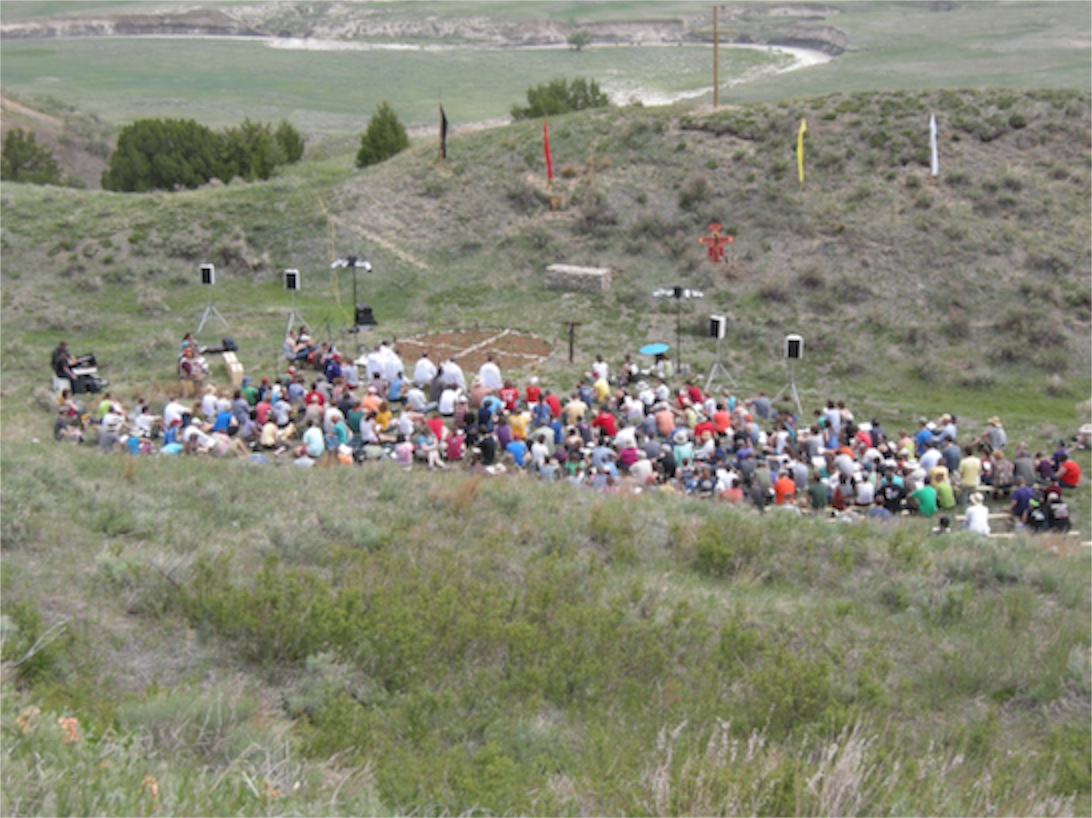
It would be easy for someone to drive right by the Taize gathering on Red Shirt Table without knowing that there was anything happening. Except for a few hand-painted signs that point the way to the gathering, there isn’t much to see from the road. The Episcopal Church on Red Shirt Table sits far enough off of the paved highway that many people drive by without even knowing it is there. But If you drive down the dirt road, there is an amazing site. In a place that some might call “the middle of nowhere” a tent city has sprung up, with a few large circus-style tents, a half dozen large family camping tents, three tipis, and a hundred or more backpack style tents. There are benches with tubs of water for washing, banks of porta potties, and rows of tables set up for serving food. The only smoke is from the outdoor cooking fires. But, most impressively, there are hundreds of young people from all over the world, speaking a half dozen or more languages, all smiling, talking, and helping one another.
They have gathered to engage in an ancient Christian practice of praying three times each day, singing sacred songs together, studying the Bible, and talking about their faith. The popular press doesn’t give much attention to the faith practices of young adults, except an occasional article about how they often do not participate in traditional church institutions.
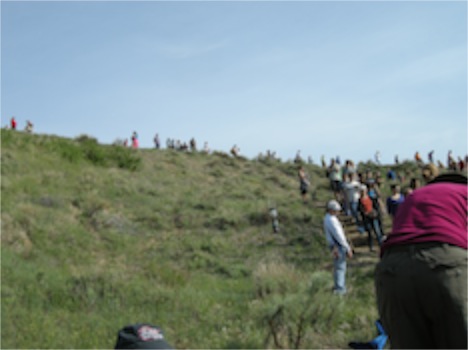
It is impossible to describe. It is one of those “you had to be there to understand” kind of things.
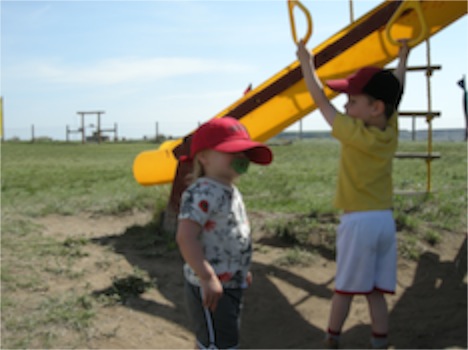

The time quickly passed. It was a great day.
Most importantly it was an inspiring day. As we enter the season of Pentecost, it is a powerful experience to be reminded that the Holy Spirit is still moving through the people. Sometimes in the more formal settings of the church, the seasons come and go with a sort of routine. We sing the same songs that we sang the last time this season came around. We hear scriptures that are familiar because we read them over and over again. We become attached to our building and the setting of our worship because it holds so many memories for us.
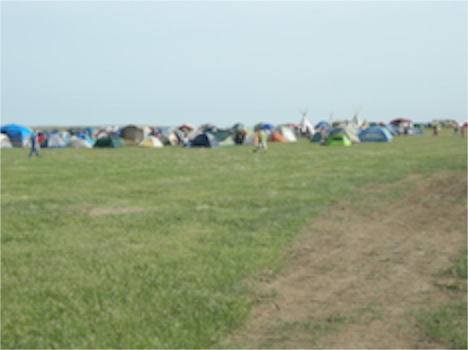
There is no doubt in my mind, however, that lives are transformed by the experience. God is calling forth new leaders for the church. New ways of living lives of faith are emerging. A new generation is emerging with a firm grip on faith and the practices that deepen faithful living. The songs and the prayers will go with the people wherever they roam.
I’m just glad I was there to see it.
Copyright © 2013 by Ted Huffman. I wrote this. If you want to copy it, please ask for permission. There is a contact me button at the bottom of this page. If you want to share my blog a friend, please direct your friend to my web site.
Grace and Glory
25/05/13 05:09
United Airlines flight 4909 was running late last night. In fact it was more than a full hour late. I heard that there was an unexpected mechanical problem with the Dash 8. The Dash 8 is now produced by Bombardier, but most pilots still refer to the company as DeHavilland. DeHavilland Canada produced some memorable airplanes during the Second World War, but among pilots the company is remembered for the DHC-2 Beaver: the iconic bush plane of the north. They went on to build a larger version, dubbed the Otter and then added an engine to make the twin Otter. From there the airplanes kept getting bigger. The DHC-8 is a very successful commuter airplane, produced in several different lengths. The turboprop engines are reliable and the airplane is fairly quick. It is also able to operate out of shorter runways and at airports with higher altitudes than the fanjet commuter planes. As a result there are a lot of them in service in the mountain west. For many years they were the preferred way to get skiers into the high resorts such as Sun Valley, Aspen and the like. But last night the United Express Dash 8 needed some attention before it could roll back from the terminal in Denver and head towards Rapid City.
Normally I wouldn’t notice such an event, but Susan was on the flight, returning from a visit with her sisters, niece and nephews in Missoula, Montana. In our hub and spoke airline world, the quickest distance between two points is rarely the shortest distance. So I was waiting at the airport longer than usual last night. With modern cell phones, I was aware that the flight was running late. I had received messages from Susan and I have a phone application that allows me to track regularly scheduled airlines. I had earlier entered the flight numbers into my phone so I could see if she would make her connection, etc.
Not wanting to go into the paid parking area too soon (the first 20 minutes are free), I was parked in a free lot at the edge of the airport called the cell phone waiting area. The lot is near the top of the hill and affords a beautiful view of Rapid City. Last night the weather was beautiful. There was just a slight breeze. The windy weather we have been experiencing had let up. It was a beautiful evening, so I got out of the car and watched the sunset and the moonrise from a beautiful vantage point. After a week of running ragged, it was such a gift to just stand in the open area and ride the world from day tonight.

If you have been thinking that the moon is a little brighter lately, you are not just imagining it. The moon really is brighter. It is nearing perigee. Tonight the moon will past its closest point in its orbit around the earth and the perigee coincides with the full moon. The last time the moon was this close was in March of 2011. The moon not only seems larger, it also seems brighter because of its close approach to the earth.
The night sky is best viewed far away from the lights of the city, and the airport isn’t the best place to get away from light pollution, but the cell phone lot doesn’t have parking lot lights, so I got a good view.
My mind wandered south about 35 miles to the edge of the badlands on the Oglala Sioux Pine Ridge Reservation. On Red Shirt Table young adults had been arriving all day long. They are setting up a tend encampment and as I was watching the moonrise, they were having evening prayers together. I’m not exactly sure where the prayers were being held, but I imagine that they were roughly facing East, because that is where the view of the badlands and the creek running below is the best. Pleasant weather and a spectacular moonrise make for a great greeting as 500 guests gather. I’m sure that they were feeling well fed. I have been a part of some of the preparations and I watched as mountains of food were taken down so that everyone would get enough to eat. I imagine that many of the guests are city dwellers and that camping out on Red Shirt Table is going to be quite an experience for them. I was glad that it wasn’t windy, as some of them are probably less than experienced in pitching tents. A big wind might have scattered tent parts across the badlands.
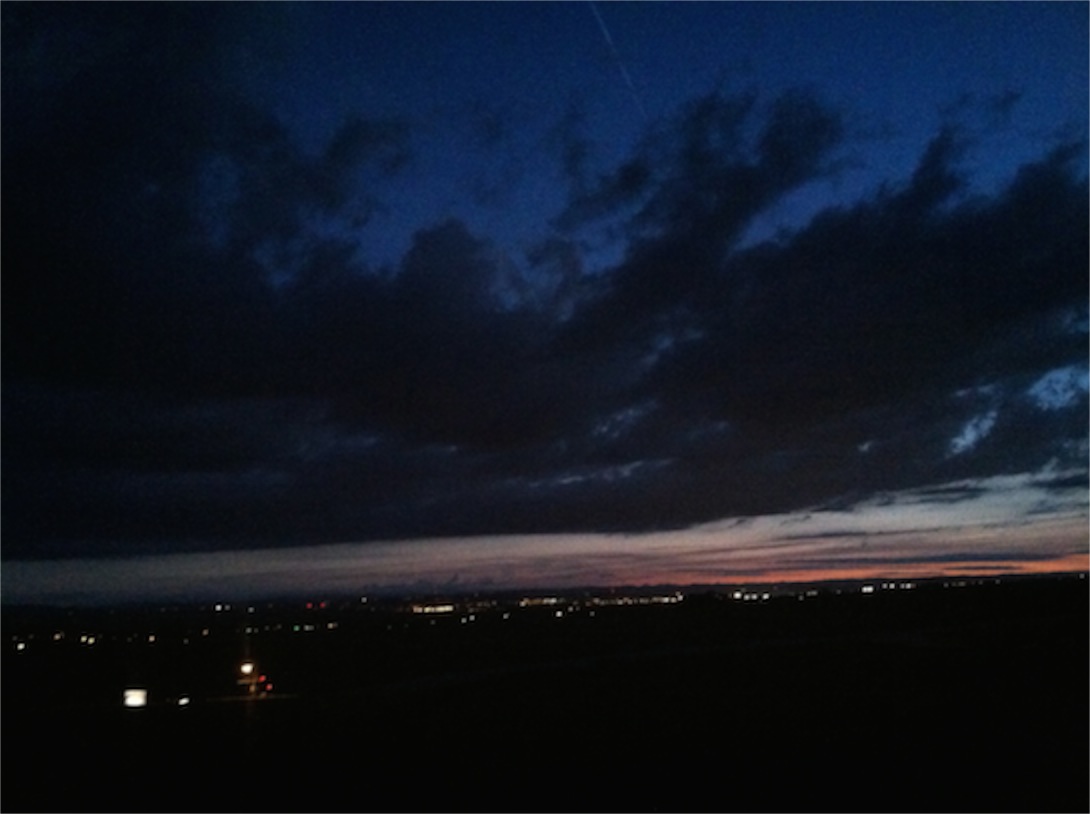
So I said a prayer of gratitude for the beautiful weather as I stood outdoors and watched the light fade in the west and the bright moon rise in the east. Soon the airplane came into sight and it was time to greet Susan, load her suitcase into the car and head for home. We needed to get our sleep. This morning we head out to Red Shirt Table to join the young people for morning prayers, provide a bit of help in the childcare area during the morning and share in noontime prayers before coming back into town for our regular duties and preparations for tomorrow’s service at our church.
When we pause to take a breath and look out at the world, God provides us with the gift of beauty at every turn. The power of the Holy Spirit is literally as close as our next breath. The glory of creation surrounds us. And, all too often, we take it all for granted. We fail to see the incredible power that surrounds us at every moment. People who think that miracles are a disruption of the natural order aren’t seeing what is really going on. The miracles of grace and beauty and peace are offered all around us. The natural order is itself miraculous. Miracles are the norm, not the exception.
Some time ago I was at a planning meeting for the gathering on Red Shirt Table. Robert Two Bulls boldly declared, “The weather will be beautiful.” I was initially skeptical. I know that we can get high winds, spring thundershowers, and even hail this time of the year. What I didn’t remember is that even the awesome storms that cross the prairies are beautiful. Robert could make his declaration because it was true. Whatever weather comes, it will be beautiful.
Grace abounds. Glory surrounds. It is up to us to see it.
Normally I wouldn’t notice such an event, but Susan was on the flight, returning from a visit with her sisters, niece and nephews in Missoula, Montana. In our hub and spoke airline world, the quickest distance between two points is rarely the shortest distance. So I was waiting at the airport longer than usual last night. With modern cell phones, I was aware that the flight was running late. I had received messages from Susan and I have a phone application that allows me to track regularly scheduled airlines. I had earlier entered the flight numbers into my phone so I could see if she would make her connection, etc.
Not wanting to go into the paid parking area too soon (the first 20 minutes are free), I was parked in a free lot at the edge of the airport called the cell phone waiting area. The lot is near the top of the hill and affords a beautiful view of Rapid City. Last night the weather was beautiful. There was just a slight breeze. The windy weather we have been experiencing had let up. It was a beautiful evening, so I got out of the car and watched the sunset and the moonrise from a beautiful vantage point. After a week of running ragged, it was such a gift to just stand in the open area and ride the world from day tonight.

If you have been thinking that the moon is a little brighter lately, you are not just imagining it. The moon really is brighter. It is nearing perigee. Tonight the moon will past its closest point in its orbit around the earth and the perigee coincides with the full moon. The last time the moon was this close was in March of 2011. The moon not only seems larger, it also seems brighter because of its close approach to the earth.
The night sky is best viewed far away from the lights of the city, and the airport isn’t the best place to get away from light pollution, but the cell phone lot doesn’t have parking lot lights, so I got a good view.
My mind wandered south about 35 miles to the edge of the badlands on the Oglala Sioux Pine Ridge Reservation. On Red Shirt Table young adults had been arriving all day long. They are setting up a tend encampment and as I was watching the moonrise, they were having evening prayers together. I’m not exactly sure where the prayers were being held, but I imagine that they were roughly facing East, because that is where the view of the badlands and the creek running below is the best. Pleasant weather and a spectacular moonrise make for a great greeting as 500 guests gather. I’m sure that they were feeling well fed. I have been a part of some of the preparations and I watched as mountains of food were taken down so that everyone would get enough to eat. I imagine that many of the guests are city dwellers and that camping out on Red Shirt Table is going to be quite an experience for them. I was glad that it wasn’t windy, as some of them are probably less than experienced in pitching tents. A big wind might have scattered tent parts across the badlands.

So I said a prayer of gratitude for the beautiful weather as I stood outdoors and watched the light fade in the west and the bright moon rise in the east. Soon the airplane came into sight and it was time to greet Susan, load her suitcase into the car and head for home. We needed to get our sleep. This morning we head out to Red Shirt Table to join the young people for morning prayers, provide a bit of help in the childcare area during the morning and share in noontime prayers before coming back into town for our regular duties and preparations for tomorrow’s service at our church.
When we pause to take a breath and look out at the world, God provides us with the gift of beauty at every turn. The power of the Holy Spirit is literally as close as our next breath. The glory of creation surrounds us. And, all too often, we take it all for granted. We fail to see the incredible power that surrounds us at every moment. People who think that miracles are a disruption of the natural order aren’t seeing what is really going on. The miracles of grace and beauty and peace are offered all around us. The natural order is itself miraculous. Miracles are the norm, not the exception.
Some time ago I was at a planning meeting for the gathering on Red Shirt Table. Robert Two Bulls boldly declared, “The weather will be beautiful.” I was initially skeptical. I know that we can get high winds, spring thundershowers, and even hail this time of the year. What I didn’t remember is that even the awesome storms that cross the prairies are beautiful. Robert could make his declaration because it was true. Whatever weather comes, it will be beautiful.
Grace abounds. Glory surrounds. It is up to us to see it.
Copyright © 2013 by Ted Huffman. I wrote this. If you want to copy it, please ask for permission. There is a contact me button at the bottom of this page. If you want to share my blog a friend, please direct your friend to my web site.
Filling the Boot
24/05/13 05:35
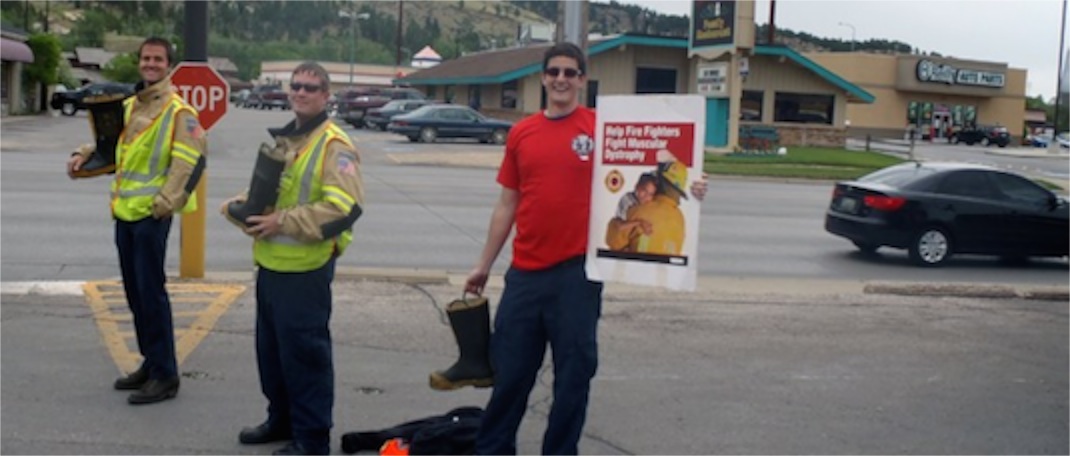
Yesterday our local firefighters were out on the streets in the area of town that I drive through with their annual “Fill the Boot for MDA” campaign. The process is pretty simple. They park their trucks in a well-known parking lot and stand at the edge of the street and accept donations to the Muscular Dystrophy Association. I don’t know the history of the connection, but there has been a strong tie between firefighters and the MDA for many years. Part of what firefighters have to do is to wait. We want them to be ready when the call comes. They can respond as quickly from the parking lot as they could from the station, so being out on the street poses no risk to the community.
More importantly, it is a good thing when the firefighters get out with the public. They get opportunities to have some conversation and the general public gets to see these hard-working everyday heroes. I always make a point of thanking them for their project as I slip a donation into the boot. Yesterday I got a few dollar bills so that I could make multiple donations and talk to multiple firefighters.
But there is something that makes me sad about the project. I have a similar reaction to the Salvation Army bell ringers at Christmas time. Actually the Salvation Army is a bit different. There is no arguing that the Salvation Army uses the donated money to help people. The quick response of the Salvation Army to this week’s tornado in Oklahoma is a visible example of important work that needs to be done. And this work needs to be supported. But the church I serve has been at work in our city for 135 years. We have supported millions of dollars in direct services to the community in that period of time. And we have never resorted to asking others to support our work. We raise our money from our members. We have never resorted to asking our members to stand on street corners and in front of shops to beg for funds to support our mission and ministry. Quite frankly those red kettles give the impression that you can support important community relief charities with impulse giving – a few coins make you feel good and you can forget about it as soon as you and your custom crafted espresso beverage are settled in your warm car.
The truth is that too few people think about their giving enough to plan and to make major investments in the organizations that improve the lives of all people. Too many people judge charitable organizations by how frugal they are instead of what results they get. A chilly volunteer standing on a street corner isn’t getting paid to stand there and ring the bell, so the donor believes the gift will all go to the cause they support. It is true that the Salvation Army is pretty efficient with the monies donated, but donors don’t often think about those things. Nor do people asking for small donations ever get the opportunity to challenge givers to think about how they could plan to make a real difference in the world.
Our city’s firefighters are good people and they have a good spirit about raising money for a medical charity in which they believe. I didn’t see any frowning or dejected firefighters out there yesterday. They all smiled when I chatted with them. Still, it makes me a bit sad to think that we have to take our community servants and heroes – the people who already have responded to the call to serve others and make them stand on street corners and beg for money. There is enough wealth in this community to adequately fund medical research without having to ask our community servants to do the asking for us.
No don’t get me wrong. There is no shame in asking for donations. I do it every week just before we pass the plates in our church. And I certainly do not want people to hold back in their generosity when the boot is passed or the red kettle is set up. I’m just saying that if people would think more carefully about their giving and plan in such a manner that we direct funds to the things that matter the most.
Charitable giving remains essentially flat in the United States at around 2% of GDP. That is about one-fifth of the Biblical tithe. I’m not saying that we could magically make people more generous. I’m not saying that we could instantly alter the priorities of our country so that we would realign our giving. But if we were to increase giving by ½ of 1 percent, that would mean $75 billion a year in increased funding for organizations and causes that help to improve the quality of life for all people. Imagine what that would accomplish if we were to direct the funding to the organizations that get the best results.
What if we could say to Big Brothers/Big Sisters, “You’re really good at helping kids. This year, instead of having your employees and volunteers spend so much time raising funds, why don’t we give you enough money so you could put them to work helping kids?” What if we said to our firefighters, “We’ll raise the money for MDA, you get out there and mingle with the people so they get to know you as fellow citizens instead of people with the boot out asking for donations?”
Frankly, I don’t think that dream is going to happen any time soon. Too many people have the mistaken notion that they have to be rich before they give. Too few people see giving as an opportunity instead of a burden.
So here’s a place where we can start. Next time you see a neighbor asking for funds for a community charity give more than your money. Give them your thanks. Stop to talk about the things that are most important to you. In addition to the buck in the boot, shake then hand of the firefighter and thank him or her for caring about our community.
And, when you get home, do some thinking about your giving. What could be accomplished with an additional percent of your annual income? How would be the best way to invest those funds?
Copyright © 2013 by Ted Huffman. I wrote this. If you want to copy it, please ask for permission. There is a contact me button at the bottom of this page. If you want to share my blog a friend, please direct your friend to my web site.
Veni Sancte Spiritus
23/05/13 05:19
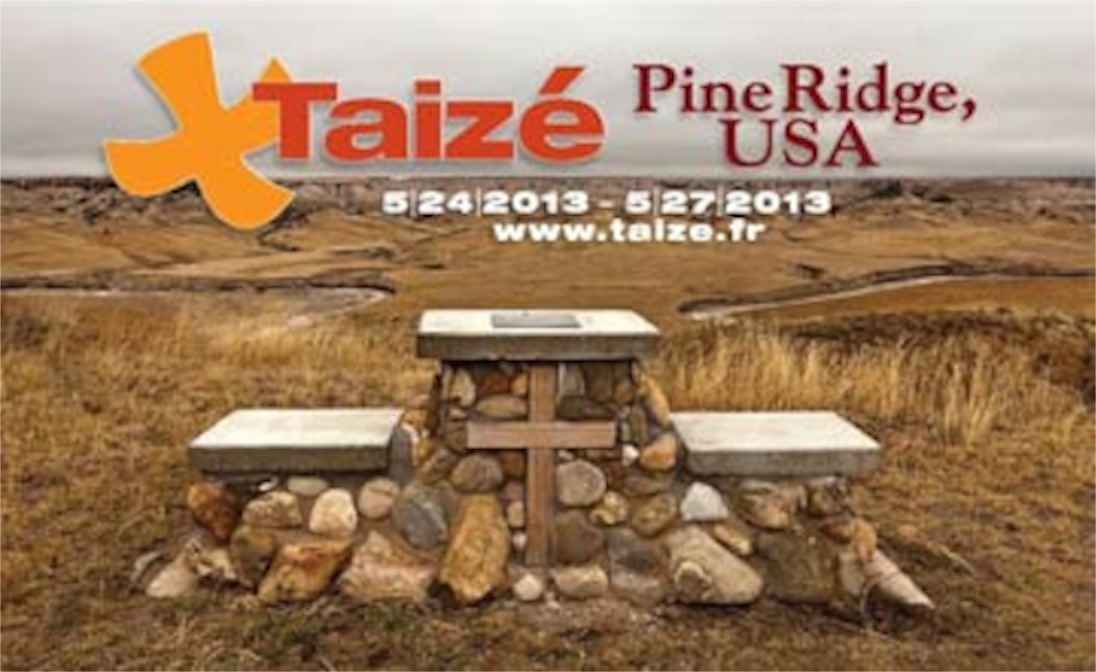
It has been busy around here. We are a team-led church with three pastors, an administrative colleague and three music staff. Two of the pastors are out of town this week, which means I’m the only one around. That means that the workload is a bit higher. We are launching a capital funds drive and we enter the advance gifts portion of the drive this evening. That means that there is behind the scenes work that needs to be done. Next week we produce our newsletter, which requires extra work from our staff. And we are a busy, growing church where workdays are seldom limited to a set number of hours. Our people lead very busy lives and so meetings and gatherings need to be scheduled for times that work for them. I’ve had an evening meeting every day this week and there’ll be another this evening.
This isn’t a complaint blog. Busy is good. Being a part of an exciting, serving congregation is a wonderful gift. Having dedicated volunteers to give of their lives above and beyond the usual schedule is wonderful. We are in no danger of becoming bored. But such a life needs to be supported by prayer and study and ample quiet time. I have learned that getting up to write my blog during the hours when others sleep is an important part of my life. Pausing for deep breathing and meditation are critical to stay focused. There is a difference between busy work and God’s work. It takes careful discernment to know which is which.
Last night ended with an hour of prayer with the people who are preparing for this weekend’s “pilgrimage of trust on earth” at Red Shirt Table on Pine Ridge. People have already begun to arrive from around the world. The teams are working to prepare the site. Tomorrow the big influx comes. Nearly 500 young adults aged 18 – 35 will participate in events starting with dinner Friday evening and concluding with noontime prayers on Monday. Red Shirt table has a tiny Episcopal church. The large gathering requires a fleet of porta-potties, a truckload of tents, mountains of food, and an enormous amount of faith. My role in all of this is very small. I went to Bridger yesterday to pick up a tipi. I’ll load a truck and trailer with tables and tents and other items today to haul down to the gathering. I’ll help with childcare on Saturday.
But along the way, I have been receiving a gift of prayer. Last night’s gathering was a potluck supper and discussion followed by a time of prayer. I had been rushing all day long. I took my pot of soup over to the gathering then headed back to our church to meet with a couple planning a wedding and then returned for the prayers.
There is no way of describing how much I needed those prayers. I didn’t ever count, but there were perhaps 50 people, mostly young adults, who came into the informal room quietly with their shoes removed and the candles burning. The songs were gentle and easy to learn. The prayers were simple with sung responses. The gospel that was proclaimed was the same reading that we will use in our congregation on Sunday, so I’ve already been through a Bible study on the text and a reflection in preparation for my preaching on Sunday. Last night, however, I didn’t have to engage in an intellectual challenge. I could just listen. We began by singing in Latin, “Veni Sancte Spiritus.” In the Roman tradition, this phrase is sometimes called the “Golden Sequence.” It is prescribed for the liturgies of Pentecost. It is a simple prayer inviting the Holy Spirit into our lives, into our community, into our work and into our world. As we immersed ourselves in words that faithful people have sung together for centuries, the cares of the day faded away. There is something that is deeply moving to me about hearing ancient melodies and words sung and played by people who are decades younger than I. Together we were swept up in the reality that the times of our lives are short, but we are a part of something that is much bigger than ourselves.
In recent decades the term “sustainability” has become very popular. It refers to laying aside practices that consume too many resources in such a way that they cannot be sustained over a long period of time. You can live on debt for a short time, but it is not sustainable. It will catch up with you. The over consumption of fossil fuels will work for a generation or two, but the fuel will run out and the practice is not sustainable. Sustainable living focuses on smaller, more energy-efficient dwellings and renewable practices such as gardening. But you don’t need me to explain this to you. You have heard the term and know what it means. In some circles, it has become common to refer to certain practices within the church as being “sustainable.” Appropriately sized budgets are called “sustainable.” Energy efficient buildings are called “sustainable.” The term misses the mark when applied to the church, however.
The church does not endure through the centuries because it is sustainable. We are not called to form sustainable ministries. We are called to pour out our lives in service to others. “Whoever wants to save his life will lose it, but whoever loses his life for my sake will find it.” (Matthew 16:25). The church has not endured because it has been accomplished at building institutions. It has endured because it is resilient. It adapts and changes to meet the challenges and opportunities and circumstances of each new event. The history of the church is filled with failure and mistakes and missteps. We have not been perfect. We have not always planned well for the future. We have sometimes gone off on tangents. I do not aspire to participate in a church that is “sustainable.” Rather I would live a life that is resilient.
An hour of prayer with faithful young people last night was a demonstration of the church that is resilient. The future is not going to look like the past. It is not even going to look like the present. They are about creating something entirely new. But they are connected to thousands of years of faithful tradition. And flowing through all of these centuries is a song: “Vene Sancte Spiritus.”
Come, Holy Spirit.
Copyright © 2013 by Ted Huffman. I wrote this. If you want to copy it, please ask for permission. There is a contact me button at the bottom of this page. If you want to share my blog a friend, please direct your friend to my web site.
Along the trail
22/05/13 05:41
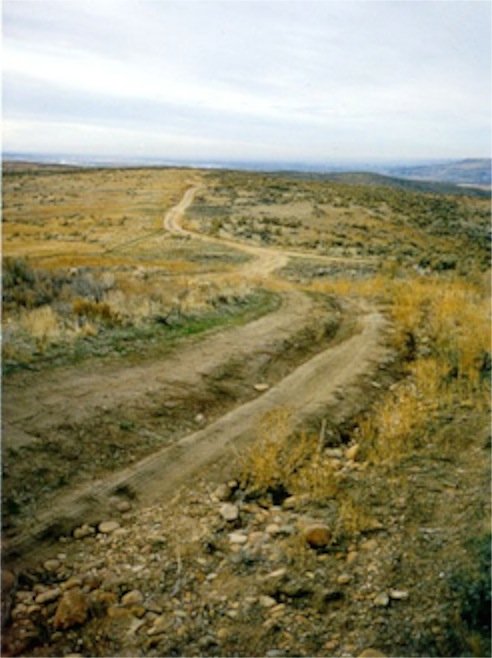
History is always reported from a point of view. I have known for a long time that the story told about the westward movement of predominantly European peoples has a “cowboy” version and an “Indian” version. Those wagon trains looked differently depending on whether you were a settler headed west or a resident watching the influx of people.
I grew up along the Bozeman trail. The Bozeman trail was relatively late in the process of what was called the “great migration” of settlers along the Oregon Trail. The discovery of gold in Montana led to a shortcut from the main Oregon Trail. The Bozeman trail headed north from the North Platte River across the Powder River Basin heading to the gold fields of Montana. Compared to the main Oregon Trail, the travel along the Bozeman trail was relatively light. Only about 3,500 immigrants took that route. But from the perspective of the northern plains tribes, the trail was an incursion on their last and best hunting grounds. Eventually the trail required a military occupation of the region, conflicts including the Battle of the Little Bighorn, and the Fort Laramie Treaty that officially declared the trail to be abandoned. These days you can travel an Interstate Highway that follows the historic trail part of the way.
I can show you a few places where the wagon ruts from the old trail are still visible on the hillsides.

The promise of the trail was a new home in the rich farmlands of the Willamette Valley in Oregon. To get there, immigrants had to cross the Rockies, a task not easily accomplished during the summer and impossible during the winter with a wagon. The route of the trail was strewn with items left behind as the settlers lightened their loads and learned to live without some of their prized possessions. It was also dotted with grave sites of those who succumbed to illness along the way and died far from medical treatment.
The participants in the great migration of 1843 faced an uncertain trail. There was a debate about whether or not the wagons could make it all the way to Oregon. Some claimed that they would have to abandon the wagons and proceed on horseback when they got to the Blue Mountains. The train was big enough that they managed to clear enough trees to let the wagons pass. However, when they reached The Dalles, Oregon, there was no road around Mount Hood, so the wagons were disassembled and floated down the Columbia. It was three more years before the Barlow Road was completed around Mount Hood allowing a wagon to make the entire journey overland.
The completion of the transcontinental railroad in 1869 provided a safer and much faster way to journey west. In most cases it ended up being less expensive to ride the train as well. 2,000 miles is a long summer’s journey with an ox team. They travel about 2 two 3 miles an hour and the driver usually walked to the left side of the oxen. A whole summer on a diet of bacon, biscuits, beans and coffee would have been an adventure in itself. Guides typically required settlers to carry all of their food with them, rather than rely on hunting along the way. Some settlers herded cattle and sheep and butchered animals along the way for additional food.
The settlement of the West Coast of the United States by immigrants forever changed not only the lands settled but also the lands the settlers crossed. How that great movement of people is viewed depends upon your point of view. If your family was among the settlers, you see it differently than if you descended from one of the tribes whose land was crossed and whose way of life was disrupted. There is still room for more information and interpretation of the events.
Who we are today is a product of events that occurred long before we were born. And if you study history enough, you become aware that what we do today will shape the lives of those yet to be born. Like the settlers on the trail, we belong to a great stream. Ours travels in time, from the past to the future. We occupy a very small amount of time in a much bigger picture.
Copyright © 2013 by Ted Huffman. I wrote this. If you want to copy it, please ask for permission. There is a contact me button at the bottom of this page. If you want to share my blog a friend, please direct your friend to my web site.
Storm!
21/05/13 05:15
There isn’t much information that I can add to the story of the massive tornado that killed at least 91 persons, including 20 children, in Oklahoma yesterday. The details are spread across the Internet, television, newspapers and other media. Once again our country is called to respond to a tragedy of massive proportions with whatever means we have at hand. The best way to help is to give in advance. Red Cross, Church World Service and other agencies are already responding with funds that they had in hand. Now is a good time to donate to replenish those funds and increase preparedness for the next disaster. And disaster will come.
It was a day when a weather radio is a good investment. The EF-4 tornado (166-200 mph winds) was being closely observed by the National Weather Service in Norman, Oklahoma. A tornado warning was issued at 2:40 p.m. local time. The storm touched down at 2:56 and cut a mile wide swath for 20 miles in the next 40 minutes. Debris from the storm was found over 100 miles away. The important number in all of that is that there were 16 minutes between the time the warning was issued and the the storm touched down. 16 minutes to seek shelter. 16 minutes to save lives. As awful as the storm was – as devastating as is its aftermath – it could have been worse. It would have been worse if not for the warning that was issued.
People ignore warnings, however. I don’t know how many video clips have shown up on YouTube of people filming storms while the sirens are going off and they should be heading for shelter. Leave the filming to the professional storm chasers.
I was, for the most part, unaware of the storms while they were going on. It was windy here all day yesterday and I decided to leave my lawn mowing for another day even though this week is very busy. I did a little work in the garden and tried to catch up with some things at home and run errands before heading off to an evening meeting. During the meeting, my daughter placed two calls to my cell phone and so I exchanged a few text messages with her to make sure that she was OK. After the meeting we had a conversation. It turns out that she had quite a day. She lives a long ways from Oklahoma in Warrensburg, Missouri, but it is an area where there are plenty of severe storms. Warrensburg is about 150 miles northeast of Joplin, where a tornado in May of 2011 caused $2.8 billion in damages – the most expensive tornado yet recorded in the United States. So we make sure our daughter has a safe area in the basement of her home and knows what to do when a storm threatens.
Still it was a frightening day for her. She works in a child development center and the sirens went off as funnel clouds were sighted in their area. The children were escorted into the safe areas of the building and their buildings are safe and secure. Still there is video footage of the funnel clouds at Whiteman AFB on YouTube, so some people headed outdoors to look, while others were taking care of their children’s safety.
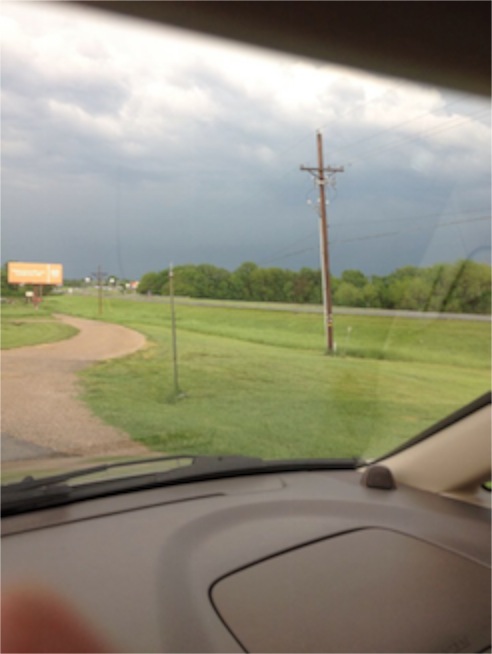 The pictures of the storm clouds that our daughter sent us from her drive home later that afternoon are frightening enough. She was never in direct danger, but it was a frightening day in Missouri yesterday.
The pictures of the storm clouds that our daughter sent us from her drive home later that afternoon are frightening enough. She was never in direct danger, but it was a frightening day in Missouri yesterday.
It is easy to be smug when you live in a place that doesn’t see many tornadoes. There is no record of a tornado touching the ground at our elevation in the hills. The threats of natural disaster in our area come from wildfire and flash flooding. Of course when the super volcano that lies under Yellowstone National Park erupts, we are in exactly the wrong address.
The citizens of Moore Oklahoma know that they live in tornado alley. In May of 1999, they experienced a tornado that killed 36 people and injured 583. That storm damaged or destroyed 8132 homes, 1041 apartments, 260 businesses, 11 public buildings and 7 churches. The footprint of the storm that went through their area on a similar but different track yesterday is easily twice as large as that 1999 storm. When they add up the damages, yesterday’s storm is one for the record books.
And it is easy to ask, “Why don’t they just move away?” as if people have total control over where they live and the ability to just pull up stakes and go to some other place. People live where they do because of a wide variety of reasons including historic links to the land, the jobs that they have, family ties and a host of different reasons. It isn’t always possible to simply change the place where you live.
Besides, it is too late to assign blame at this point. There is a terrible mess that needs to be cleaned up and the mess includes sifting and sorting through the overlapping grief that occurs when so many are lost. Every one of those victims had a life that impacted many different people. The circles of grief and mourning extend far beyond the immediate area of the storm. According to one of the weather blogs that I read, yesterday’s storm is likely to be one of the five most damaging tornadoes in history.
So be careful out there – wherever you live. Be aware of the risks. Pay attention to the weather. Listen for the sirens. Invest in a weather radio. Have a plan to get to shelter quickly if necessary. And remember that you are not alone.
And please be generous with your gifts to help with the recovery and prepare for the next storm. Charitable giving in the US runs at about 2% of GDP. Another ½ of one percent would make an incredible difference. It might well be the best investment you can make.
It was a day when a weather radio is a good investment. The EF-4 tornado (166-200 mph winds) was being closely observed by the National Weather Service in Norman, Oklahoma. A tornado warning was issued at 2:40 p.m. local time. The storm touched down at 2:56 and cut a mile wide swath for 20 miles in the next 40 minutes. Debris from the storm was found over 100 miles away. The important number in all of that is that there were 16 minutes between the time the warning was issued and the the storm touched down. 16 minutes to seek shelter. 16 minutes to save lives. As awful as the storm was – as devastating as is its aftermath – it could have been worse. It would have been worse if not for the warning that was issued.
People ignore warnings, however. I don’t know how many video clips have shown up on YouTube of people filming storms while the sirens are going off and they should be heading for shelter. Leave the filming to the professional storm chasers.
I was, for the most part, unaware of the storms while they were going on. It was windy here all day yesterday and I decided to leave my lawn mowing for another day even though this week is very busy. I did a little work in the garden and tried to catch up with some things at home and run errands before heading off to an evening meeting. During the meeting, my daughter placed two calls to my cell phone and so I exchanged a few text messages with her to make sure that she was OK. After the meeting we had a conversation. It turns out that she had quite a day. She lives a long ways from Oklahoma in Warrensburg, Missouri, but it is an area where there are plenty of severe storms. Warrensburg is about 150 miles northeast of Joplin, where a tornado in May of 2011 caused $2.8 billion in damages – the most expensive tornado yet recorded in the United States. So we make sure our daughter has a safe area in the basement of her home and knows what to do when a storm threatens.
Still it was a frightening day for her. She works in a child development center and the sirens went off as funnel clouds were sighted in their area. The children were escorted into the safe areas of the building and their buildings are safe and secure. Still there is video footage of the funnel clouds at Whiteman AFB on YouTube, so some people headed outdoors to look, while others were taking care of their children’s safety.

It is easy to be smug when you live in a place that doesn’t see many tornadoes. There is no record of a tornado touching the ground at our elevation in the hills. The threats of natural disaster in our area come from wildfire and flash flooding. Of course when the super volcano that lies under Yellowstone National Park erupts, we are in exactly the wrong address.
The citizens of Moore Oklahoma know that they live in tornado alley. In May of 1999, they experienced a tornado that killed 36 people and injured 583. That storm damaged or destroyed 8132 homes, 1041 apartments, 260 businesses, 11 public buildings and 7 churches. The footprint of the storm that went through their area on a similar but different track yesterday is easily twice as large as that 1999 storm. When they add up the damages, yesterday’s storm is one for the record books.
And it is easy to ask, “Why don’t they just move away?” as if people have total control over where they live and the ability to just pull up stakes and go to some other place. People live where they do because of a wide variety of reasons including historic links to the land, the jobs that they have, family ties and a host of different reasons. It isn’t always possible to simply change the place where you live.
Besides, it is too late to assign blame at this point. There is a terrible mess that needs to be cleaned up and the mess includes sifting and sorting through the overlapping grief that occurs when so many are lost. Every one of those victims had a life that impacted many different people. The circles of grief and mourning extend far beyond the immediate area of the storm. According to one of the weather blogs that I read, yesterday’s storm is likely to be one of the five most damaging tornadoes in history.
So be careful out there – wherever you live. Be aware of the risks. Pay attention to the weather. Listen for the sirens. Invest in a weather radio. Have a plan to get to shelter quickly if necessary. And remember that you are not alone.
And please be generous with your gifts to help with the recovery and prepare for the next storm. Charitable giving in the US runs at about 2% of GDP. Another ½ of one percent would make an incredible difference. It might well be the best investment you can make.
Copyright © 2013 by Ted Huffman. I wrote this. If you want to copy it, please ask for permission. There is a contact me button at the bottom of this page. If you want to share my blog a friend, please direct your friend to my web site.
Constantly Connected
20/05/13 04:08

There are many aspects of contemporary technology that I enjoy. I am a bit of a gadget guy. I like having devices and learning how to use them. But there are some things about all of our technology that occasionally get the best of me.
Decades ago we lived in North Dakota. We had a home telephone. The number was published in the directory and we had an office phone. There was no such thing as voice mail and we didn’t have answering machines at either place. People in town generally knew that if we didn’t answer the phone at home or at the church we were likely to do so in a little while. I remember thinking that being a small town pastor meant that I was always on call. Everyone in town knew my home phone number. If they wanted to talk to me and I wasn’t at the office, they simply called me at home. It didn’t matter if their concern was something that could be easily handled the next day, they called when they were thinking of it. And we always answered the phone if it rang. In those days I was a volunteer for the local ambulance squad. When it was my turn to be on call for the ambulance, I had to go to the hospital, pick up a beeper, and carry it with me wherever I went. The beeper only worked within a reasonable distance from town, and I had to be able to get to the hospital in a hurry if paged, so when I was on call I never left town. At the time I sometimes felt pinned down. We used to say that in order to take a day off we had to leave town.
Now I long for those days.
When I am on call I carry my smartphone. I can go almost anywhere I want and be constantly available. The phone has e-mail capacity so that I can check my e-mail. It has voice mail so that people can leave me a message if I am talking with someone else. It has call waiting, so I know when someone is trying to get in touch with me while I am talking to someone else.
I can pick up my phone to check in with a family member and within a few seconds I can be aware of a half dozen other people who are trying to get in touch with me. These days, leaving town is no guarantee of a day off.
When we first moved to South Dakota, I said that I was reluctant to get a cell phone. The phones that were available at the time were bag phones. They didn’t fit into pockets and had limited battery capacity. We referred to them as car phones. I told people that I needed to have some place in my life where I could get away from the phone and the car was a good place. Then I got a cell phone and the cell phones got smaller and smaller. And they started to build more and more towers. When I started using a cell phone, it wouldn’t work at camp, or at the lake, or in many places in the open country. I didn’t mind it. I enjoyed getting away from time to time.
But the world changed. And I changed, too.
These days I turn off my phone during worship services. I don’t take it with me when I go out in the canoe, but that it about it. The rest of the time I’m on call 24/7. I know I don’t have to constantly check my e-mail and I try to take breaks from it from time to time, but like to be available for my family. Most of the members of the congregation are very good about calling the office when they have routine business, but some only have my cell phone number in their cell phones.
I’ve discovered that the youth in our church have different ways of dealing with this constant connectivity. Some of them don’t answer their phones when they ring, or at least use the caller id display to screen their calls. There are quite a few youth in our group who never check their voice mail. If we ask them about it, they say, “If you wanted to get ahold of me, why didn’t you send a text.” We have to know which method is the best to get a message to them. They simply don’t use all of the technologies that are available to them as a way of setting some boundaries and keeping some distance.
I haven’t learned how to do that, yet. I feel that I need to respond quickly to every voice mail and every text and every e-mail. It seems that in order to stay connected we need to use all of the available technologies. But I observe that others are learning to establish better boundaries.
Throughout the generations, our people have always had to struggle to find solitude. Being alone is necessary to develop our relationship with God. When Moses began to lead the people through the wilderness, there were so many demands that he had trouble finding time to just be alone with God. When he did take time to be with God, it seemed that the people always got into trouble. It took some time before the system of judges was established and he learned that no one can be all things to all people.
The lessons I need to learn are not new. The technology is new, but the basic principles haven’t changed. I need time when I am alone with my private thoughts and prayers. I need time when I am deeply present with others and invested in relationships. And I need time when I am productive. Most of all I need balance. Inappropriate use my gadgets can throw me out of balance. I need to give myself permission to sometimes not be available. Not to do so is to shortchange my time with God.
Looking at it that way, the messages can stay in my in box for a while longer.
Copyright © 2013 by Ted Huffman. I wrote this. If you want to copy it, please ask for permission. There is a contact me button at the bottom of this page. If you want to share my blog a friend, please direct your friend to my web site.
Graduation Sunday
19/05/13 05:18

Today is the day. We will be honoring six high school graduates this year. This class holds a special nostalgia for me because the graduates were born the year we moved to Rapid City. Among the graduates is the person whose baptism was the first I celebrated in this congregation. Not all of the families have belonged to the church for all of those years, but I held most of these kids when they were babies and I watched them play as youngsters and journeyed through confirmation preparation with them. As we have been making the rounds of the graduation parties, I notice how much I recognize the children in the pictures on the poster boards. I have a sense of having shared a significant part of their journeys with them.
More important than my role is the role of the congregation in the lives of these youth. Rapid City’s high schools are big – around 2,000 students each. That means that the youth don’t get to know everyone else in their class. Some connect through activities such as music or drama or sports. But the connections made through the church are important as well. Some life-long friendships have been forged through Sunday School and Vacation Bible School and Youth Group and Confirmation classes. Along with the youth, we have been running into adults from our church at the graduation parties as well. Through our confirmation mentor program, high school youth often forge lasting relationships with adults in our church. These relationships continue beyond the rite of confirmation and it is easy to see that they are significant in the lives of the young people.
There are lots of platitudes issued about youth in the church. I’ve collected many of them simply by being involved in the week-to-week process of youth ministry for three and a half decades. For example, I’ve learned that when someone says, “This church needs more young people – they are the future of the church,” chances are pretty good that the person making the statement won’t do anything to invite youth into the church – in fact that person often doesn’t have much grace in accepting the activities and antics of youth. They want the youth to be the future, but are rarely willing to share leadership in the present. The desire for large youth groups is sometimes pure nostalgia. There are people who can remember when family sizes were bigger and so was the youth group. They want to recover those days. But the clock never turns backward and the challenge of the church is to serve the youth that we have in the present.
In my experience, the size of the youth group is rarely the most important part of youth ministry. Big youth groups tend to separate from the main congregation. The youth hold events and activities that occur in times and places where they are not witnessed by the rest of the congregation. Youth tend to associate with other youth and are rarely integrated into the whole life of the congregation. There are plenty of people who enjoy youth congregated and elsewhere. They will tolerate a “youth Sunday” from time to time, but they don’t want to change the style of music in every-Sunday worship to welcome more youth. They like it when the youth paint a designated youth room from time to time, but they don’t want to have young people lead the process to choose new furniture for the church parlor.
What works best is working with the youth we have. General congregational growth is good, but evangelism efforts that target only one age group tend to produce churches that are less diverse and less stable. When we invite all ages into our congregation and foster relationships between people of all ages we may not have the biggest youth group in town, but we provide better experiences and relationships for the youth who are a part of our congregation.
The bottom line is simple. Youth ministry is not about institutional maintenance. Having more youth in the church does not assure a stable future. Having more youth in the church does not decrease the need for participation and leadership from elders. Youth ministry is mission work. We raise our children in the church and send them out into the world. Some of the youth we graduate today will become active in other congregations as they move away from our town for college or jobs. Some will become leaders for the church in other settings. A few may choose to live their adult lives in our town and participate in our church. Others may live much of their adult lives elsewhere and return to our community and our church upon retirement. There are as many patterns as there are individuals.
We don’t engage in youth ministry to take care of ourselves. We engage in youth ministry to pass on the faith to a new generation. And that new generation will go places that we have not yet imagined. New forms of church life will emerge. New ways of being faithful will be revealed. The future belongs to God, not us.
So today we celebrate. And we wax nostalgic just a little bit. And we confess that we are not in control. But we also celebrate that we can trust these young people to form community and live their faith in ways that are meaningful and appropriate for them. And that faith will be passed on to generations that are yet unborn.
Copyright © 2013 by Ted Huffman. I wrote this. If you want to copy it, please ask for permission. There is a contact me button at the bottom of this page. If you want to share my blog a friend, please direct your friend to my web site.
A mess to clean up
18/05/13 04:50

I don’t even produce two gallons of waste oil in a year. I don’t change the oil in the cars or the pickup – only do the job on the lawn mower and snow blower. It takes me a couple of years to get a gallon. I had two gallons of waste oil because our next-door neighbor had to be out of his house by the last day of March. Which means he was moving during holy week and I didn’t have much time to help him. And he needed help. And he was my neighbor, so I said I’d get rid of all of the stuff he no longer needed. That turned out to be a lot. I’ve made two trips to the dump, one to the Habitat for Humanity Re-Store, one to Cornerstone thrift store, and one to the cardboard recycling drop off. And I still have a small amount of things that need to be recycled. So I was taking his waste oil to be recycled.
He moved because his home was repossessed. It is a long story. He and his wife went through a divorce. Then he got laid off from work. Then he got depressed. For a couple of months we never saw him outside at all. We would go and knock on the door and he wouldn’t answer. When he finally emerged from the depths of depression it was too late. He had to get moved and get out of the house in order to salvage what little bit of financial resources he had left. He is starting over from scratch at 58 years of age.
He has been on my mind since the move because I haven’t heard from him and I worry about him. I was thinking about him a few days ago because we were asking about a colleague at a meeting earlier this week. The colleague suddenly had to resign his job, take disability, and is facing an early retirement. It is because of depression. I noticed that there was an unwillingness to talk about his illness very much. It isn’t because my colleagues are unaware that depression is an illness. It isn’t because they don’t know the stresses involved in serving as a local church pastor. But there is some kind of a message in the back of our minds when a colleague suffers from a mental illness. We always wonder if the person was attentive enough to self-care. It is as if we think they might have somehow participated in the process that led up to the illness. We wouldn’t think that way if a colleague were disabled by cancer or arthritis or heart disease. But there is some old and inaccurate conditioning in our brains about mental illness. We can’t help but seeing mental illness as somehow a kind of weakness. Or worse, sometimes people think of it as a moral failure.
It is simply an illness. It is a disabling illness. It can be a fatal illness. It is a tricky illness to treat. And we pay the premiums of our disability insurance precisely because disability could happen to any one of us at any time.
My neighbor’s depression is not the cause of poor judgment on my part. I’m the one who put that jug of oil in the back of the pickup without tying it down. My colleague’s depression isn’t the cause of inappropriate attitudes about mental illness in our culture. But both left me feeling a little upset this week, for entirely different reasons. I got a little mad at our culture for its judgmental attitude. I got a little made at myself for a poor decision that left a mess to be cleaned up. There’s nothing wrong with a little anger if it is invested in working for justice or making changes. There are a lot worse things than getting a little upset. Maybe getting upset is a tiny window on a big problem. Like a small pain gives some insight into a much bigger pain. Sometimes the joints in my hands hurt after a day’s work. It is nothing, but it can help me be more sympathetic towards someone who lives with chronic pain. Maybe getting a little upset gives me an opportunity to draw closer to a friend or neighbor or family member or colleague who is suffering from a mental illness. I can’t know how that person feels, but I can show a bit of compassion.
And spending time cleaning up a mess that I made myself is a good teacher. I’ll add that one to the list of things I’m unlikely to do again. I hope that it is a similarly good teacher for the companies that spill larger amounts of oil.
Copyright © 2013 by Ted Huffman. I wrote this. If you want to copy it, please ask for permission. There is a contact me button at the bottom of this page. If you want to share my blog a friend, please direct your friend to my web site.
More than One Verse
17/05/13 04:19
It often surprises me when individuals and groups take a single verse from the Bible and treat it as if it is more important than other verses of the Bible. To be sure, proof texting occurs with other documents, but there are entire religious movements that are based on taking one or two verses from the Bible without considering the context and applying them in vastly different circumstances. It is a kind of reverse theology. Instead of reading the Bible with an open mind for what it teaches about God and religion, some people decide what they believe and then go to the bible for sentences and phrases to support the beliefs they already have.
I suppose that it is easier to point out the beliefs of another and call it proof texting than it is to examine one’s own beliefs in the light of the whole bible. It is likely that someone could comb through my writings and sermons and point out examples of proof texting. I have tried to be led by the scriptures rather than the other way around. I follow the lectionary for my preaching precisely because I believe that rather than the preacher choosing the text, the text should choose the preacher. Each week I face the challenge of taking the texts that I have been given in this particular discipline and applying them to the circumstances of the community that I serve. Occasionally I am able to do so with grace. Sometimes I fail to see the obvious. Commonly, I discover something about the text that I had not noticed in previous readings.
As a result, I am reluctant to claim that I know exactly what any verse of the Bible means or how it should be applied to contemporary living. I think that our understanding and faith continue to grow when we are open to being led by the words of scripture.
I have quoted Psalm 127 over and over again. I have used it as the basis for prayers at Habitat for Humanity building sites. I have quoted it in devotions for church committees and groups. I have quoted it to police officers and other first responders. It is one of the songs of ascents that have been attributed to Solomon. Like other Psalms, it was transmitted orally for many generations before ever being written down, so it is difficult to know exactly how long our people have been using it, but it has been thousands of years:
Unless the Lord builds the house,
the builders labor in vain.
Unless the Lord watches over the city,
the guards stand watch in vain.
In vain you rise early
and stay up late,
toiling for food to eat –
for he grants sleep to those he loves.
Children are a heritage from the Lord,
offspring a reward from him.
Like arrows in the hands of a warrior
are children born in one’s youth.
Blessed is the man
whose quiver is full of them.
They will not be put to shame
when they contend with their opponents in court.
These days, however, I am a bit reluctant to use that psalm in some contexts because it has become the rallying cry of those opposed to the use of modern contraceptives. The choice whether or not to use birth control should, in my opinion, be a matter of personal decision, not public policy, but I think it is safe to say that the Psalms don’t have a solid position on the use of modern contraceptives because no such contraceptives were available in the time that our people began using the psalms. It is a bit like trying to find a psalm that addresses cloning or space travel or any other technology that didn’t exist when the psalms were first written.
Governor and Presidential candidate Mitt Romney made a reference to the psalm in a graduation speech at Southern Virginia University: “Get married, have a quiver full of kids if you can.” I don’t know whether or not Governor Romney, who is a Mormon, was appealing to fundamentalist Christians in his speech, but at least his speechwriters should have known that the Quiverfull Movement is a name given to a group of fundamentalist Christians who have used that verse from Psalm 127 as a reason to give up all forms of contraception and have as many children as they can. Quiverfill families often reach up to a dozen children.
I suppose that if you wanted to proof text the psalm, you might point out that the psalm gives the reason to have many children is that those with many children “will not be put to shame when they contend with their opponents in court.” Do you think that Romney, who is trained as a lawyer, purposely set out to have a large family so that he could win in court?” It seems unlikely.
To take only one psalm is to miss the simple fact that there are all kinds of families in the Bible. Abraham and Sarah had only one son. Jacob fathered children with four different women. John the Baptist was an only child. Ruth gave a son to Naomi so that her property rights could be re-established. There are lots of stories about families in the bible and there is no one single model that is prevalent. The culture surround the time that Biblical stories were written was very patriarchal, but there are stories of strong women and reconfigured families and adoptions and no single model of family life emerges as the only one where people are beloved by God.
If you take the verse literally, it might make you shudder to think that some people think of their children as weapons of war. The comparison of children to arrows in the Psalm doesn’t mean that children are to be used as weapons.
I won’t get into the simple fact that Solomon didn’t believe in monogamy and the psalm has been used to support the argument that men should have multiple wives.
There is a sick joke that I have frequently heard. The story is that a man is very depressed and goes to his pastor for advice. The pastor instructs the man to consult his bible for hope and peace. The man leaves the pastor, goes home, and opens his bible randomly. The first verse he reads is “And Judas went out and hanged himself.” The man closes his bible and tries to find meaning in the verse. Finally, he decides to try again and opens the bible once again to read, “And Jesus said, ‘Go and do likewise.’”
Sometimes it takes more than one verse to draw meaning from the scriptures.
I suppose that it is easier to point out the beliefs of another and call it proof texting than it is to examine one’s own beliefs in the light of the whole bible. It is likely that someone could comb through my writings and sermons and point out examples of proof texting. I have tried to be led by the scriptures rather than the other way around. I follow the lectionary for my preaching precisely because I believe that rather than the preacher choosing the text, the text should choose the preacher. Each week I face the challenge of taking the texts that I have been given in this particular discipline and applying them to the circumstances of the community that I serve. Occasionally I am able to do so with grace. Sometimes I fail to see the obvious. Commonly, I discover something about the text that I had not noticed in previous readings.
As a result, I am reluctant to claim that I know exactly what any verse of the Bible means or how it should be applied to contemporary living. I think that our understanding and faith continue to grow when we are open to being led by the words of scripture.
I have quoted Psalm 127 over and over again. I have used it as the basis for prayers at Habitat for Humanity building sites. I have quoted it in devotions for church committees and groups. I have quoted it to police officers and other first responders. It is one of the songs of ascents that have been attributed to Solomon. Like other Psalms, it was transmitted orally for many generations before ever being written down, so it is difficult to know exactly how long our people have been using it, but it has been thousands of years:
Unless the Lord builds the house,
the builders labor in vain.
Unless the Lord watches over the city,
the guards stand watch in vain.
In vain you rise early
and stay up late,
toiling for food to eat –
for he grants sleep to those he loves.
Children are a heritage from the Lord,
offspring a reward from him.
Like arrows in the hands of a warrior
are children born in one’s youth.
Blessed is the man
whose quiver is full of them.
They will not be put to shame
when they contend with their opponents in court.
These days, however, I am a bit reluctant to use that psalm in some contexts because it has become the rallying cry of those opposed to the use of modern contraceptives. The choice whether or not to use birth control should, in my opinion, be a matter of personal decision, not public policy, but I think it is safe to say that the Psalms don’t have a solid position on the use of modern contraceptives because no such contraceptives were available in the time that our people began using the psalms. It is a bit like trying to find a psalm that addresses cloning or space travel or any other technology that didn’t exist when the psalms were first written.
Governor and Presidential candidate Mitt Romney made a reference to the psalm in a graduation speech at Southern Virginia University: “Get married, have a quiver full of kids if you can.” I don’t know whether or not Governor Romney, who is a Mormon, was appealing to fundamentalist Christians in his speech, but at least his speechwriters should have known that the Quiverfull Movement is a name given to a group of fundamentalist Christians who have used that verse from Psalm 127 as a reason to give up all forms of contraception and have as many children as they can. Quiverfill families often reach up to a dozen children.
I suppose that if you wanted to proof text the psalm, you might point out that the psalm gives the reason to have many children is that those with many children “will not be put to shame when they contend with their opponents in court.” Do you think that Romney, who is trained as a lawyer, purposely set out to have a large family so that he could win in court?” It seems unlikely.
To take only one psalm is to miss the simple fact that there are all kinds of families in the Bible. Abraham and Sarah had only one son. Jacob fathered children with four different women. John the Baptist was an only child. Ruth gave a son to Naomi so that her property rights could be re-established. There are lots of stories about families in the bible and there is no one single model that is prevalent. The culture surround the time that Biblical stories were written was very patriarchal, but there are stories of strong women and reconfigured families and adoptions and no single model of family life emerges as the only one where people are beloved by God.
If you take the verse literally, it might make you shudder to think that some people think of their children as weapons of war. The comparison of children to arrows in the Psalm doesn’t mean that children are to be used as weapons.
I won’t get into the simple fact that Solomon didn’t believe in monogamy and the psalm has been used to support the argument that men should have multiple wives.
There is a sick joke that I have frequently heard. The story is that a man is very depressed and goes to his pastor for advice. The pastor instructs the man to consult his bible for hope and peace. The man leaves the pastor, goes home, and opens his bible randomly. The first verse he reads is “And Judas went out and hanged himself.” The man closes his bible and tries to find meaning in the verse. Finally, he decides to try again and opens the bible once again to read, “And Jesus said, ‘Go and do likewise.’”
Sometimes it takes more than one verse to draw meaning from the scriptures.
Copyright © 2013 by Ted Huffman. I wrote this. If you want to copy it, please ask for permission. There is a contact me button at the bottom of this page. If you want to share my blog a friend, please direct your friend to my web site.
Movies I've missed
16/05/13 04:30
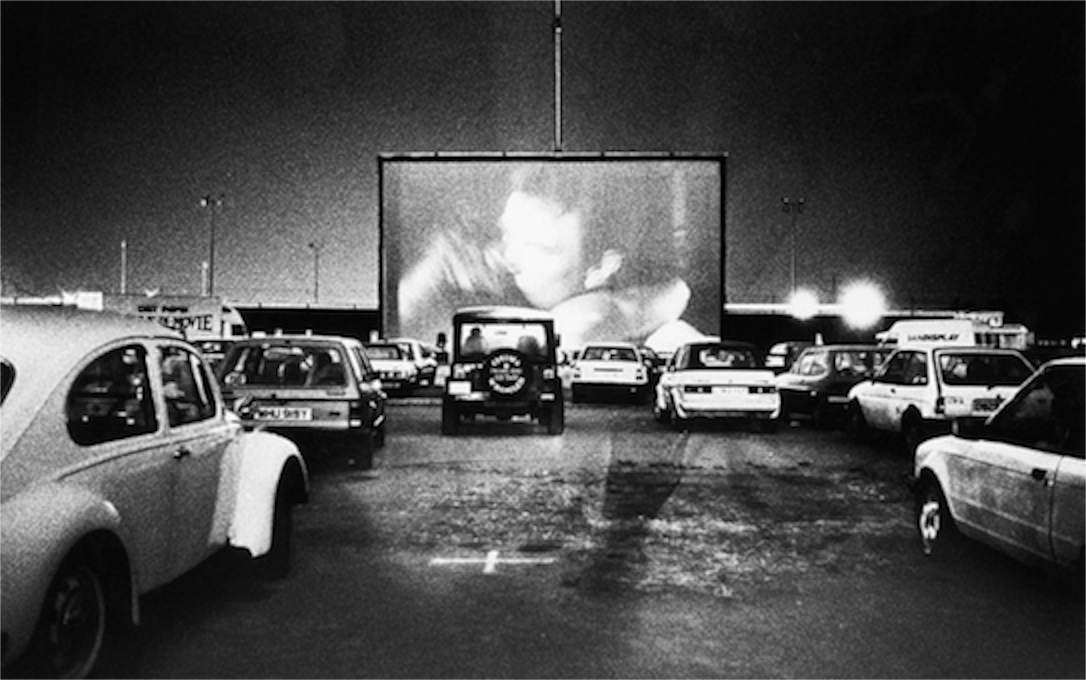
My hometown was too small to fully support two movie theatres when I was growing up. The indoor theatre was called “The Strand” and it went through several seasons of being open for a while and then closed. The building in which it was located was eventually converted into other uses. The Drive In, “The Van” was a summer only operation and most years it was able to offer a bill of movies, seldom more than one movie per week. After I got my driver’s license, for a couple of years, I went to nearly every movie that they showed. One night each week, sometimes the last showing of the film, was “buck a car” night. The theatre had to sell a lot of popcorn to break even. One thing I remember about our drive in is that the sound was notoriously bad. Sometimes we had to move the car two or three times to find a speaker that wasn’t too crackly.
Maybe that is why I have never gotten into watching movies. I remember that during my college years there were some really good theatres with good sound systems and I attended several movies. From time to time my parents would come to town and sometimes we went to a movie. A movie was also a possibility for a date, within the budget of a student.
There have been some other times when we have watched a few movies. When our children were interested in movies, we went with them. I think I’ve seen all of the Star Wars movies and the Indiana Jones series and there was a phase when I went to some terminator and die hard movies with our son because I wanted to know what he was watching and to have the opportunity to discuss what was happening on the screen with him.
But I never turned into a real fan of the movies. My colleagues often chide me for being out of touch with culture because I watch so few movies. Members of the congregation frequently tell me of a great movie that they have seen and recommend that I watch it. I intend to do so, but when I’m planning the use of my time, watching a movie rarely comes to mind. I never have trouble thinking of things to do.
When our son was in college, he really paid attention to the movies and I read movie reviews and tried to pay attention to the awards ceremonies so that I was capable of having an intelligent discussion with him.
In a way it is strange that I am not more into movies. I love storytelling. I like to read short stories and novels and I listen weekly to a couple of podcasts that are short stories presented by writers and professional actors. If I ever got the opportunity to attend “Selected Shorts” at the Getty Center or at Symphony Space, I am sure that I would jump at the chance. You’d think that I would be attracted to the artistry and creativity of those who tell stories in movies. And I like the fact that a movie is a collaborative art. People rarely make movies by themselves. It is a huge team effort. I am intrigued by people who dedicate so much of themselves to something that is bigger than their own personal effort or glory. Intellectually, I can think of all kinds of reasons to be a fan of movies and to support them by watching them.
But when I have free time, going to a movie doesn’t seem to be attractive. I’d rather go for a walk or paddle a canoe or sit and talk over a cup of coffee.
I think that part of it is that I don’t really prefer life to come at me in a larger-than-life format. I don’t need booming bass and loud surround sound in order to hear. I don’t need people to appear to be 10 feet tall on the screen. I remember an experience several years ago when we were shopping for a television for our family. Our kids were in elementary school and we had decided to get a television and a VCR so that we could watch movies at home. I went to a superstore where they had a display of many different brands of televisions, thinking that the store with the largest selection would give me the best opportunity to make comparisons and choose a brand that was appropriate for our family. The store must have had a hundred televisions that were all turned on at once. The salesman demonstrated the features of televisions while a dozen were clearly in sight. Most of the televisions were displaying the same program. It was just too much sensory experience for me. I retreated to the parking lot, glad to get out of the store. I couldn’t choose a single television from all of those options. I ended up buying one from a discount store that only had three or four brands. Sometimes when I watch a movie in a theatre, I get a similar sensation. There is just too much coming at me. I’ve enjoyed a couple of movies in omnimax theatres, but what I have seen in those settings is a shorter movie, not a feature-length production.
Perhaps I just prefer my movies in smaller doses. I read books that way. I rarely read an entire book in a single day. I take a week and sometimes longer to read and process a book. I live with the story for a while and then I do something else and come back to the story in my own time and experience it at my own pace.
So the bottom line is that I don’t have tickets for any of the films at Cannes. I doubt if I will ever even go to the new film version of The Great Gatsby. I enjoyed the book, but I wouldn’t put it on a list of my top ten most favorite books. I think it is unlikely that I will read it again. I’m not sure that the world needs another movie adaptation of the book. I’m unlikely to pay attention to which films garner the awards at Cannes. I think I have it correct that Spielberg is the head of the jury this year and Solderbergh is the director who made the movie about Liberace.
I’ll let others watch the movies and then I can have them tell me about the experience. After all I still read about movies. I just don’t go to many of them. Maybe my colleagues are right. Maybe I am culturally deprived and out of touch. If so, it is a very nice place to be.
Copyright © 2013 by Ted Huffman. I wrote this. If you want to copy it, please ask for permission. There is a contact me button at the bottom of this page. If you want to share my blog a friend, please direct your friend to my web site.
A Connoisseur's Snobbery
15/05/13 04:28

When I buy a bottle of wine, which I rarely do, and most often do as a gift to someone else, I pay attention to the price. Like other purchases I do have my limits and pretending that I have more financial resources than I do seems pointless and silly. I know just a little bit about varieties of grapes and names of wines. From there, I usually choose the wine by the label. It is not a sophisticated system and one that a connoisseur would certainly turn his nose up at. But then an expert in the English language would be equally dismayed at the dangling participle at the end of the last sentence.
Given all of the culture and tradition and ritual and general hoopla that surrounds wine, I’m a bit dismayed at the growth of contemporary coffee culture in the United States. That arena is starting to fill up with snobs and I fear that it is becoming as uppity as wine these days.
Susan and I were early to have a coffee grinder and purchase beans from specialty roasters. When we lived in North Dakota, the closest roaster was 150 miles away and I looked forward to trips to that town to purchase fresh coffee. This time of the year is when the first fresh beans from Central America begin to arrive and I learned a bit about the seasons of coffee and different varieties from around the world. In those days we also used canned coffee for our home brewing because we didn’t always have access to fresh beans.

When Starbucks opened its first espresso bar at Pike Place Market in Seattle, I had relatives in the area and before long had been treated to the theater of baristas pulling shots and making lattes and cappuccinos. There was a real indulgence in the foamy milk and I developed a taste for it. I begin my day with a latte with a touch of honey or maple syrup most days. But it is an indulgence and even without the sweetener, the milk does mask the flavor of the coffee. When I am in the mood for the flavor of coffee, I’m likely to reach for a pacific coffee such as Kona or Sumatra and a coffee press.
As one might expect from Starbucks, given its Seattle roots, the company has invested a lot in showy technology. The company features Maestro espresso machines in its stores for pulling shots, steaming milk and crafting their signature beverages. In the past few years select stores have installed Clover machines for making a cup of brewed coffee. The Clover is a ridiculously expensive reverse coffee press, using vacuum to pull the grounds up to the top of the coffee and pull the liquid from the bottom. It makes a great cup of coffee in which there is no residue or grounds in the cup after you drink. When I have had the opportunity, I have enjoyed a few cups brewed with the Clover.

You can count on both coasts of the country to produce cups of coffee that retail in the $5 area that would cost pennies to make at home. They are selling culture and ambiance as much as coffee.
They’re also selling coffee snobbery – a quality I find as appealing as wine snobbery.
When we moved to Rapid City in the mid ‘90’s I commented to someone that the best cup of coffee in town came out of my kitchen. It was an arrogant statement and probably false. But there is a grain of truth to that. The best coffee is that which is shared with friends. It doesn’t have to cost a lot of money or have a specialty vocabulary. It doesn’t matter how it is made or where the beans were roasted. What matters most is sharing with friends.
I’m not quite ready to join the gang that gathers daily for coffee at McDonalds (where they have a senior discount that saves a dime a cup) quite yet. But I seem to be getting closer every day.
In the meantime, stop by my house or office for a cup of coffee some day. It might not be the fanciest, but the company is good.
Copyright © 2013 by Ted Huffman. I wrote this. If you want to copy it, please ask for permission. There is a contact me button at the bottom of this page. If you want to share my blog a friend, please direct your friend to my web site.
No destination in mind
14/05/13 05:26
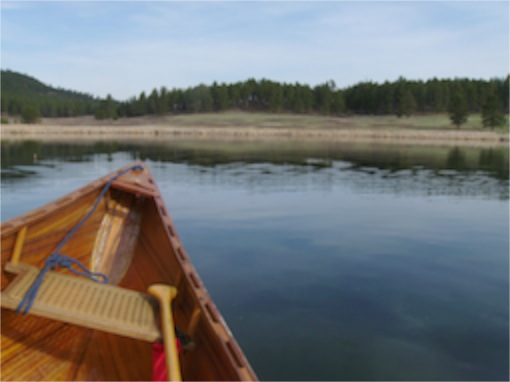
But I use my canoes for recreation. I have no destination in mind. My most common place to paddle is Sheridan Lake, a reservoir a few miles from my home. I have paddled and rowed there so often that I know individual trees along the shoreline. I notice differences in water level and watch the plants grow each season. I have become familiar with some of the inhabitants of the lake. The birds are too numerous for me to recognize individuals, but I get to know some of the other creatures quite well.
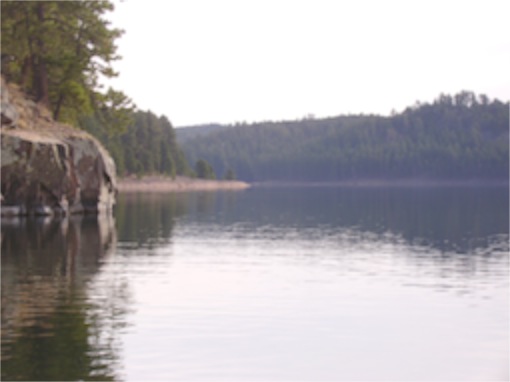
Mostly, however, I like to kneel near the center thwart. I have a pad of closed-cell foam that fits across the canoe and allows me to feel balanced and in control of the boat. Yesterday was a good day to practice the Canadian stroke and just get a feel for the grace of the boat. The prospector has enough rocker and a shallow arched hull that allows me to lean the boat to one side and make a complete circle with a couple of sweep strokes. It is especially responsive to a back sweep. I take a couple of forward strokes to get the boat moving and then lean into a back sweep and the boat spins around its center. There is a feeling of complete control, especially when the water is calm.
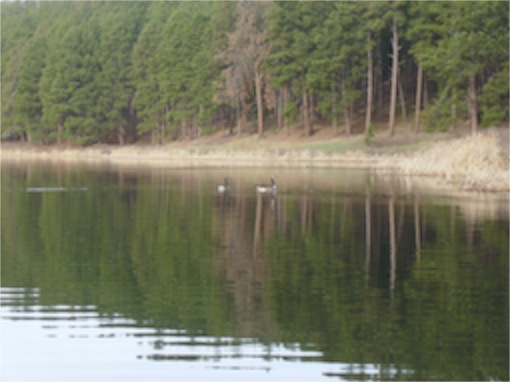
Yesterday, since I was just playing, I paddled close to the cattails. The stalks of last year’s plants are still mostly standing up, with a few broken down and bent into the water. The shoots of the new plants are just below the waterline, so it is mostly yellow and tan above the water and green below. The redwing blackbirds stand out against the stalks and they love to sit and chirp as I paddle by. They seem to know about how long my paddle is and as long as I keep that much distance they stay put on their stalks singing away.

I had taken a camera, a stuff sack of foam to use as a kneeler, my pad, pfd and paddle, so I made two trips, carrying my “stuff” first and returning for the canoe. As I started back for the canoe, I was impressed with how good it looked sitting alongside the lake, ready for its next adventure. I paused to take a picture of the boat.
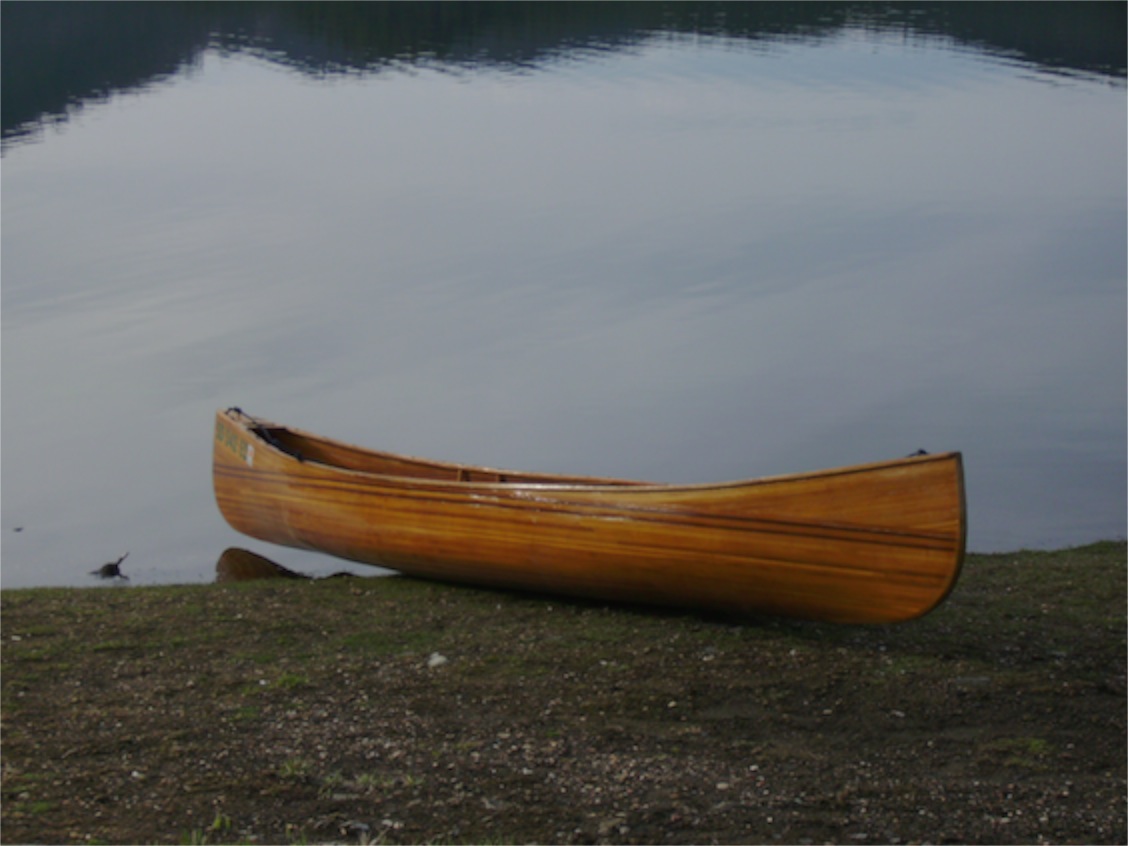
Often the best days in the hills are days when I have no destination in mind and am able to simply enjoy being in this place of beauty and peace. Indeed I am blessed by the places of my life.
Copyright © 2013 by Ted Huffman. I wrote this. If you want to copy it, please ask for permission. There is a contact me button at the bottom of this page. If you want to share my blog a friend, please direct your friend to my web site.
Handwritten Bible
13/05/13 04:16

I have a penchant for stationary and office supply stores. Over the years, I have probably spent too many dollars on pens and pads and journals and other such things. My briefcase usually has three or four pens in it. My desk fills up with pens if I am not careful. It is a vice I come by naturally. Our mother loved pens and pencils and pads. Such items were often in our stockings at Christmas. I haven’t gone in for the expensive varieties of pens. The luxury pens by Cross and Mont Blanc sold in office supply stories are often not much more than well-designed and expensively made cases wrapped around similar interior components of less-expensive writing instruments. Like other luxury items we would probably be surprised, and perhaps horrified, to find out how expensive some individual instruments are. Put a few diamonds in the cap and the price could go through the ceiling. I’m sure that there are pens available for tens of thousands of dollars.
I have no desire for such an instrument. I have a fine pen with a single pearl on it that I received as a gift from the family of an exchange student. I’ve used it a few times, but most of the time it rests in my dresser because I am afraid of losing it. Twice over the years I have found it dried out and have had trouble finding just the right refill to bring it back. It is a bit narrow and a bit slippery for comfortable writing.
If handwriting is important, the Sakura Pigma Micron is a very nice pen. They come in several different tip widths from 0.25 to 0.45 and are available for just under $3. The pigma ink is reported to be permanent – at least it will last much longer than a single human lifetime. The pens are used by archivists, artists and others to whom permanence of writing is important. The archival quality ink works well on acid free papers. The ink will not smear or feather when dry and does not bleed through most papers.

The retired interior designer undertook the discipline to get to know the Bible better. He stated that he often doesn’t retain everything that he reads and he figured that writing the entire document would bring him a familiarity and intimacy with the Bible that he could not obtain any other way. I suspect that it worked. I suspect that at least some of the words got under his skin.
It is a monumental effort. Some days he worked as many as 18 hours on the project. His work was slowed by medical treatments and health limitations. Mr. Patterson suffers from AIDS and anemia. He uses two canes to walk and needs to steady himself with walls and furniture when he gets up.
He has no illusions about what he has done. He didn’t write in expectation of some magical cure for his illness. The effort wasn’t some attempt to atone for past mistakes or to earn his salvation. He says that handwriting is just one form of preserving a document. He openly states that the Bible is not accepting of the lifestyle he adopted for much of his life. He simply says that he undertook the task because he always wanted to know what was in the Bible.
From the samples I have seen, the man has incredible penmanship. My cursive is neither so regular nor so neat has his writing, even after 788,000 words undertaken one at a time.
For centuries monks have engaged in handwriting Bibles as a spiritual discipline – an expression of a lifetime dedicated to prayer and service. Mr. Patterson hasn’t joined an order or professed sacred vows. He simply found a meaningful pursuit in his retirement and stuck with it until it was completed. His work, however, is no less sacred than that undertaken by those wearing robes. His apartment is no less a sacred space than a cloister.
The struggle to make the Bible accessible to all people, regardless of their station in life, was long-fought and often contentious. The story of the King James Version of the Bible is itself one of intrigue, struggle and controversy. Somehow, however, it has come down through the years as a document that can be owned by individuals.
The true scripture is not the words printed by a press and bound into a volume. It is not the books stacked neatly in rows in the classrooms at the church. It is not even page after page of looping cursive words handwritten with a Pigma Micron pen on acid-free watercolor paper. The true scriptures of our people are the ideas that are written on the hearts of faithful people and played out in lives of humble service to others. Mr. Patterson’s Bible is a unique gift – a gift of faith. It will be treasured for generations by his church. And it will be easy for him to give it away.
He knows that the words and ideas on his mind and in his heart are more precious than words on paper – and those will be with him forever.
Copyright © 2013 by Ted Huffman. I wrote this. If you want to copy it, please ask for permission. There is a contact me button at the bottom of this page. If you want to share my blog a friend, please direct your friend to my web site.
How much water to use?
12/05/13 05:21

I first heard the term Xeriscape when we were living in Boise, Idaho. The city sits in a lovely irrigated valley, but water is scarce. Boise gets only 11 to 12 inches of rain a year. That means that we actually moved to a more moist climate when we moved to Rapid City where the average is a whopping 16 to 17 inches per year. It snows more here in Rapid City. Both places are very dry. In Boise, water rights are carefully guarded and fiercely protected. We had an irrigation canal in our back yard, just behind our fence, but we had no rights to take water from that canal. The ditch rider came along on a regular basis to make sure that no one was cheating. I was once told by a friend who was working as a clerk in a courthouse handling water rights cases, that there was no end in sight to the cases – job security for the next century at least. At any rate, as the price of municipal water rose in Boise, people began to choose plants for their landscaping that were better suited to the desert climate and more hardy in the face of dry conditions. Little by little, home by home, our neighborhood was turning away from manicured green lawns to more imaginative landscaping with grasses that were allowed to go dormant in the middle of the summer, a variety of cacti, more gravel and sand, and other plants suited to life in the desert.
Once we moved here to South Dakota, we took up residence in a subdivision called countryside. In those days country living was part of the appeal of our neighborhood. We didn’t seem to have too many folks who were into competitive lawn care. We mowed the native grasses and plants around our houses and used hoses and sprinklers to provide enough water to keep things green next to the house. We planted a few trees, usually pine or spruce, transplanted from the nearby national forest, and let it go at that.
Then, one year a neighbor down the street installed an underground sprinkler system. That August, when the rest of us let most of the grass at the edges of our property go dormant, the lawn with the sprinkler system remained green and lush. It wasn’t long before other neighbors wanted the same. Soon there were more and more sprinkler systems being installed. Along with the sprinkler systems, the demand for water was high enough that our neighborhood association had to start offering water meters that were designed for installation on pipes with bigger diameters as homeowners began to connect to the water mains with larger pipes to get more water. It doesn’t take much imagination to see what came next – there were problems with water pressure in the water system.
That was followed by neighborhood arguments. Now we have meetings to discuss our water system on a fairly regular basis. The bottom line is that many of our neighbors simply want more water. The aging water system is in need of repairs, so we have on several occasions approved increases in water rates. Susan and I use a small amount of water compared to our neighbors, but our 500 cubic feet per month now costs us about what we were paying for water when we lived in Idaho. The neighbors with the big pipes and sprinkler systems are using a lot more than we. I guess they are willing to pay the price for the water they need. There is no discount for volume purchases. In fact our new water rates punish those who use excessive amounts of water.
Xeriscape, sometimes called zeroscape, is now a topic of conversation in our neighborhood. I’ve been looking at plants that are more drought resistant simply because we have had a couple of really dry years. Over the winter we lost some of the spruce trees that we transplanted and some of the landscape plants next to the house need to be replaced as well. I am not positive that the reason is drought, but I suspect that I simply didn’t water the plants enough. A few hardy specimens seem to be surviving, but I’m probably going to go with plants that are less thirsty next time around. Assuming that sagebrush won’t go over well with my neighbors that means that we’ll probably replace the lost trees with ponderosa pine. Even though the trees are susceptible to the pine bark beetles, the small number of trees that we have make it practical to spray the trees to protect them. We have no plans to plant an orchard any time soon.
So yesterday it fell to me to remove the dead plants that needed to be replaced. It wasn’t all that much fun. It is sad to have to remove trees in which we have invested time and energy. Digging out dead and dry evergreen trees is a scratchy proposition and my arms were itching by the time I got done. They’ll be run through the chipper and become mulch. I much prefer planting new trees to digging out old ones. We’ll get to do that later this week. And then we’ll get to spend the summer dragging hoses around our yard to make sure that the new trees get the moisture they need.
Mind you, I’m not complaining, really. We have it pretty good where we live. It is a lovely neighborhood and we have great neighbors even if there are different standards for the amount of water that is allowed for landscaping. Like most things in life, balance is what is required. We’ll use a little water for our lawn, but try to find ways to keep from using more than our fair share. And we’ll live with neighbors who come up with different ways of planning their property. Meanwhile, I’ll keep things mowed so that if a quick moving fire spreads through the neighborhood, there won’t be excess fuel in my yard.
The price of water won’t be going down in my neighborhood anytime soon. And, of course, there is a water system meeting scheduled for Tuesday.
Copyright © 2013 by Ted Huffman. I wrote this. If you want to copy it, please ask for permission. There is a contact me button at the bottom of this page. If you want to share my blog a friend, please direct your friend to my web site.
This week
11/05/13 05:49
This week the woodchucks spent a half-day splitting firewood. They’ll be at it again this morning. The overwhelming mountain of unsplit logs that occupied the volleyball court is now almost gone. The rows of neatly stacked split firewood are expanding. The team will finish the wood in the volleyball court and move on to the wood at the edge of the lot today. There is plenty of good natured joking and laughter as they work.
This week ten members of our congregation met to rough out priorities for a pilot capital funds drive. We outlined roughly $100,000 in needed work that should be accomplished this year. We talked of other priorities going forward. The theme “Sustaining the Mission, Shaping the Vision” was adopted. We don’t want a capital funds drive for our building to in any way limit our outreach ministries. We will start with things that are necessary to keep our mission moving forward and engage the congregation in a process of identifying priorities for future projects. This is one committee meeting to which I look forward. The leaders are energetic, focused and stay on task. They have a bright attitude about the future of the church.
This week the women decorated and set up for their spring tea. There are new and freshly pressed tablecloths on the tables, decorations around the room, and everything appears to be ready. Tickets have been sold, guests have been invited, and entertainment has been planned. As they worked they were enjoying being together and anticipating a good time today.
This week the stained glass group showed some of their completed pieces and started cutting glass for some pieces with angels in them. The group started making all straight cuts in their glass and pieces that were geometric. These days I see more curves and complex shapes. The bright colors are combined with some dark, smoky glass for dramatic effects.
This week our main office computer started to malfunction. The solution was to completely erase the hard drive, reinstall the system and applications. That took most of a day. Our backup scheme worked perfectly. No data was lost. Business continued as the computer was reconfigured and brought back online. It was a frustrating event, but we weathered it without missing an e-mail or slowing production of our bulletins or other important papers that flow through our office. We were grateful to have our main database on the cloud so that functions like making the deposit, updating directories and the like are not dependent upon a single machine.
This week we completed and mailed the final version of the photo directory of our congregation. Even as it goes to press it is becoming obsolete as our congregation grows and changes. We did our best to produce a snapshot of where we are as a congregation, but we didn’t order too many copies. There were days when a photo directory every five years gave an accurate picture of the congregation. We’re growing and changing too quickly for that. This will be our last photo directory done by an outside group. From now on we’ll be producing our own photo directories and have an on-demand system.
This week our congregation received new members that pushed our official membership above 600. The number is symbolic. In its 135-year history the congregation has never been able to sustain membership above 600. Our size marks a slightly different way of doing business as a church and requires that we view ourselves as the kind of congregation where there is too much going on for any individual member to participate in every event or activity. At the same time, we know that the meaning of membership is shifting in our culture and we need to look to new numeric such as attendance, participation, and mission to measure success and failure as a congregation.
This week the Kerygma Class completed another successful Bible Study. They plan to take a summer break before tackling new studies in the fall. The number of biblically literate, theologically sophisticated lay persons in the congregation continues to grow.
This week the Department of Education adopted themes and roughed out outlines for their own curriculum for Vacation Bible School. These days we have discovered that we are capable of producing curriculum that not only is of higher quality that what is available from denominations and commercial vendors, it is custom tailored to our congregation.
This week our adult choir held its last Wednesday rehearsal before summer break. The ensemble will sing for two more Sundays and after Pentecost we will switch to soloists and ensembles for worship music. The schedule for summer music is nearly full with just a few more weeks yet to be filled. The choir will be singing “Great Day” featuring soloist Jami Lynn this Sunday. Jami has been so busy with her recording career and touring that we haven’t seen as much of her as we’d like, so it is a treasure to have her home. Still, the entire ensemble produces professional quality music every week. The amount of talent in our choir loft takes my breath away.
This week we welcomed a new participant in an expanding program of widening the welcome in partnership with Black Hills Works. There are transportation problems to be solved, but our congregation is becoming increasingly accessible for people with disabilities. The leadership of Ben and Dee Anderson is helping us to expand our outreach and deepen our worshiping community.
This week the church drama group did a full rehearsal of their latest production, the youth group celebrated a year of ministry with a mini-golf outing, the watercolor society met to paint, the suicide survivor group provided meaningful relationships, the bulletins were printed, folded and stapled, the phones were answered, visits were made in the nursing home, the spiritual practices group met, church chat discussed a book, new energy-efficient light bulbs were put in our choir loft, the lawn got mowed, the church staff reviewed hymns and schedules for the summer, a care conference was held, and we took a special offering for our church camp.
And that is just one week. It was a typical week.
Those who are predicting the death of the church in our generation are welcome to join us for a week or a month or for as long as they’d like. There is certainly enough work to keep us going for a lifetime.
This week ten members of our congregation met to rough out priorities for a pilot capital funds drive. We outlined roughly $100,000 in needed work that should be accomplished this year. We talked of other priorities going forward. The theme “Sustaining the Mission, Shaping the Vision” was adopted. We don’t want a capital funds drive for our building to in any way limit our outreach ministries. We will start with things that are necessary to keep our mission moving forward and engage the congregation in a process of identifying priorities for future projects. This is one committee meeting to which I look forward. The leaders are energetic, focused and stay on task. They have a bright attitude about the future of the church.
This week the women decorated and set up for their spring tea. There are new and freshly pressed tablecloths on the tables, decorations around the room, and everything appears to be ready. Tickets have been sold, guests have been invited, and entertainment has been planned. As they worked they were enjoying being together and anticipating a good time today.
This week the stained glass group showed some of their completed pieces and started cutting glass for some pieces with angels in them. The group started making all straight cuts in their glass and pieces that were geometric. These days I see more curves and complex shapes. The bright colors are combined with some dark, smoky glass for dramatic effects.
This week our main office computer started to malfunction. The solution was to completely erase the hard drive, reinstall the system and applications. That took most of a day. Our backup scheme worked perfectly. No data was lost. Business continued as the computer was reconfigured and brought back online. It was a frustrating event, but we weathered it without missing an e-mail or slowing production of our bulletins or other important papers that flow through our office. We were grateful to have our main database on the cloud so that functions like making the deposit, updating directories and the like are not dependent upon a single machine.
This week we completed and mailed the final version of the photo directory of our congregation. Even as it goes to press it is becoming obsolete as our congregation grows and changes. We did our best to produce a snapshot of where we are as a congregation, but we didn’t order too many copies. There were days when a photo directory every five years gave an accurate picture of the congregation. We’re growing and changing too quickly for that. This will be our last photo directory done by an outside group. From now on we’ll be producing our own photo directories and have an on-demand system.
This week our congregation received new members that pushed our official membership above 600. The number is symbolic. In its 135-year history the congregation has never been able to sustain membership above 600. Our size marks a slightly different way of doing business as a church and requires that we view ourselves as the kind of congregation where there is too much going on for any individual member to participate in every event or activity. At the same time, we know that the meaning of membership is shifting in our culture and we need to look to new numeric such as attendance, participation, and mission to measure success and failure as a congregation.
This week the Kerygma Class completed another successful Bible Study. They plan to take a summer break before tackling new studies in the fall. The number of biblically literate, theologically sophisticated lay persons in the congregation continues to grow.
This week the Department of Education adopted themes and roughed out outlines for their own curriculum for Vacation Bible School. These days we have discovered that we are capable of producing curriculum that not only is of higher quality that what is available from denominations and commercial vendors, it is custom tailored to our congregation.
This week our adult choir held its last Wednesday rehearsal before summer break. The ensemble will sing for two more Sundays and after Pentecost we will switch to soloists and ensembles for worship music. The schedule for summer music is nearly full with just a few more weeks yet to be filled. The choir will be singing “Great Day” featuring soloist Jami Lynn this Sunday. Jami has been so busy with her recording career and touring that we haven’t seen as much of her as we’d like, so it is a treasure to have her home. Still, the entire ensemble produces professional quality music every week. The amount of talent in our choir loft takes my breath away.
This week we welcomed a new participant in an expanding program of widening the welcome in partnership with Black Hills Works. There are transportation problems to be solved, but our congregation is becoming increasingly accessible for people with disabilities. The leadership of Ben and Dee Anderson is helping us to expand our outreach and deepen our worshiping community.
This week the church drama group did a full rehearsal of their latest production, the youth group celebrated a year of ministry with a mini-golf outing, the watercolor society met to paint, the suicide survivor group provided meaningful relationships, the bulletins were printed, folded and stapled, the phones were answered, visits were made in the nursing home, the spiritual practices group met, church chat discussed a book, new energy-efficient light bulbs were put in our choir loft, the lawn got mowed, the church staff reviewed hymns and schedules for the summer, a care conference was held, and we took a special offering for our church camp.
And that is just one week. It was a typical week.
Those who are predicting the death of the church in our generation are welcome to join us for a week or a month or for as long as they’d like. There is certainly enough work to keep us going for a lifetime.
Copyright © 2013 by Ted Huffman. I wrote this. If you want to copy it, please ask for permission. There is a contact me button at the bottom of this page. If you want to share my blog a friend, please direct your friend to my web site.
Friday morning prayer
10/05/13 05:39
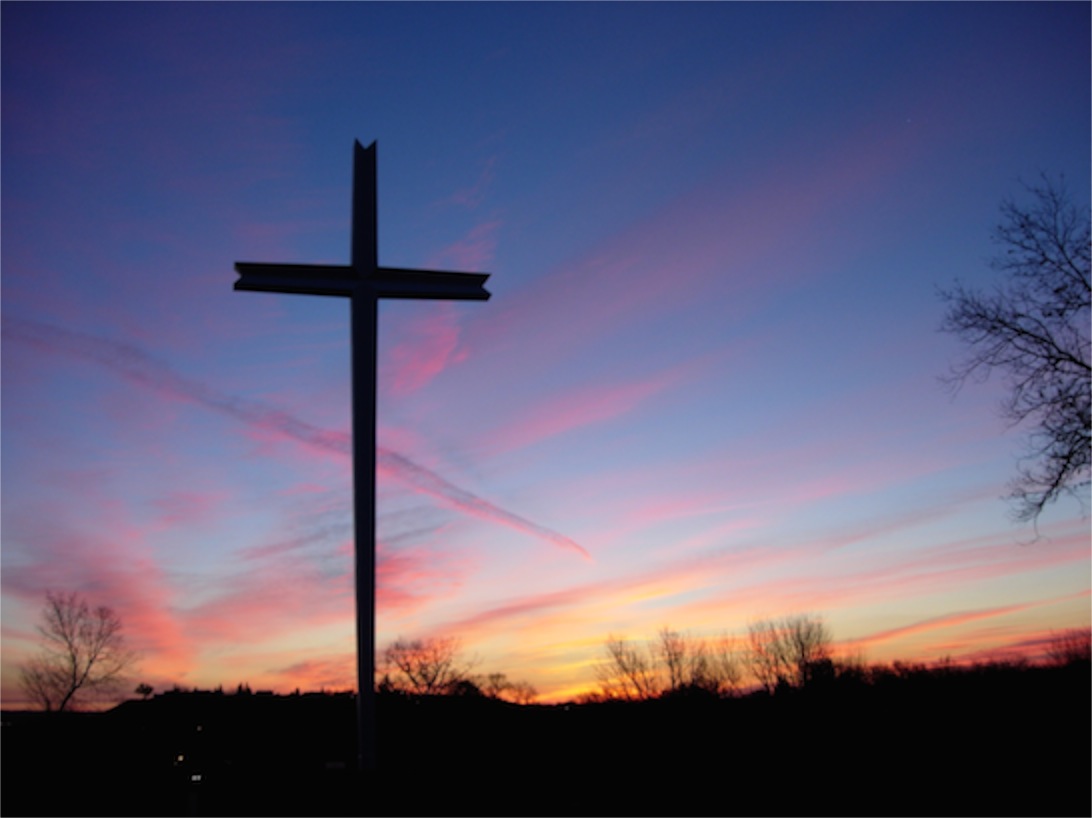
My routines haven’t always been this way, but in my current phase of life Friday is the day when I write pastoral prayers. We work our way through the order of liturgy and the music we will use by noon on Tuesday and barring some last minute changes, our worship bulletins are printed on Thursday. Friday is our Administrative Colleague’s day off and I typically start my day by doing a few small weekly chores, writing up worship notes for the lay liturgist, preparing the slides for the televisions in the entry way and fellowship that serve as greeting and announcement kiosks, and writing out a pastoral prayer.
Many heartfelt and meaningful prayers are never written. God does not require perfect poetry, measured meter, or complete sentences. God does not even require that prayers have words. Some of the deepest prayers are simply, “Thank you!” or “Glory!” or “Help!” And corporate worship is only one venue of prayer. I speak prayers when visiting individuals in homes and hospitals and other places. I pray privately in my own space every day. Increasingly I am honing my skills at offering prayers over the telephone because I do more an more pastoral counseling with that device, though It is not very natural for me or my preferred way to stay in contact with people.
The pastoral prayer, however, is a unique opportunity for a pastor. Each week, within the context of communal worship, we offer prayers together. For some individuals some weeks the quiet prayers are the most deeply worshipful. We simply sit without words for a while and listen. For others a litany or set of words we say together can be very worshipful. And sometimes, I am blessed to find the right words to express a communal sense. The pastoral prayer is occasionally a traditional prayer of our people, chosen from the psalms, a prayer book or another source. Occasionally, I adapt a prayer written by another faithful person and published. Most weeks, I feel that our setting and community demands a unique prayer that reflects what I know of the aspirations and situations of the people of our particular group of Christians.
Increasingly, I am trying to teach myself the art of poetry. It is not an easy study. I tolerated poetry when it was taught in school. But as I age, I have developed an increasing appreciation for the ability of poetry to less instead of more words. I keep a copy of the Complete Poems of Emily Dickinson close by my desk and Walt Whitman’s Leaves of Grass is a small volume often tucked in my briefcase. This year I have been reading one poem by Rainer Maria Rilke each day. And the Bible is filled with poetry. We think of the Psalms as the poetry book of the Bible and many of the Psalms stand alone as both great poetry and great prayer. The tradition of reading or singing a Psalm as a response in worship is long standing and deeply meaningful. But there is a lot more poetry than just the psalms. The great prophets were also great poets. When standing up for justice in the face of societal trends to the contrary and calling for Israel to return to its covenant with God, the prophets had to employ more than impassioned rhetoric. They went beyond prose to the power of great poetry. Great art is often required to move the hearts and consciences of the people.
Poetry, however, cannot be forced. It comes in its own way, in its own time. There may be some gifted poets somewhere who can sit down and write a poem on demand. I am not among their ranks. I can sit at my computer or with a paper journal at the assigned time, determined to write a great poem/prayer and the words do not come. I keep a little journal of prayer requests and concerns and I can take it out and read the notes there and my mind is flooded with the stories of the people I serve and know. I find tales of diseases and concerned families, of grief and loss, of sorrow and separation. I find broken promises and hurt feelings and tales of when things did not go as planned. I discover unemployment and injustice and hunger and thirst. There are also notes of celebration: births and anniversaries and the simple joys of being with those who love you. There are tragedies that cannot be stopped and joys that cannot be contained. Reading the list sometimes produces sentences of prayer. Sometimes it does not. The list is always changing and it always gets longer. Old prayers do not go away simply becomes something more urgent takes precedence in my thoughts. Grief is enduring.
Solomon said to Abiathar the priest, “Go back to your fields in Anathoth. You deserve to die, but I will not put you to death now, because you carried the ark of the Lord God before my father David, and because you shared all my father’s hardships.” That is reported in 1 Kings 2:26. I’m sure that the priest and his family prayed prayers of lament over their banishment away from Jerusalem. I’m sure that they questioned the wisdom of the king and cried out for justice. I’m sure that they watched the subsequent acquisition of wealth and power and women and influence and knowledge by the Solomon administration and questioned it. Their prayers, however, took time.
We don’t hear of the prayers of those banished at Anathoth in our Bible until over three centuries later, when we read of “The words of Jeremiah son of Hikiah, one of the priests at Anathoth in the territory of Benjamin.” (Jeremiah 1:1)
Prayers don’t always arise on schedule. They don’t always come in our time – sometimes not even in our generation. This enterprise of a relationship with God is much bigger than one pastor sitting at a messy desk in one church.
So I will try to write a prayer. I will try to find words to put to the cries of the people I serve. I will try to fashion something remotely poetic.
And I may once again discover that the deepest prayers we pray don’t involve any words at all.
Copyright © 2013 by Ted Huffman. I wrote this. If you want to copy it, please ask for permission. There is a contact me button at the bottom of this page. If you want to share my blog a friend, please direct your friend to my web site.
Camouflage
09/05/13 04:32

The kind of hunting we did in our family when I was growing up didn’t involve building blinds or wearing camouflage. We just wore our regular clothing with bright orange hats. I was told that deer couldn’t see the color orange. At any rate, we would walk and stalk the animals by considering wind direction and anticipating where they might be. In those days, there weren’t big outfitter stores like Cabellas or Bass Pro Shops. We bought our jeans and shirts from a local store and bundled up with sweatshirts and coats for hunting. Most of the time we didn’t have hiking boots. We’d wear overshoes over our regular shoes if there was snow.
These days, there are entire sections of camouflage clothing in every outdoors store. Around here the turkey hunters are the ones who are most into wearing camouflage, but most hunters have some items of camouflage. I don’t know if wearing camouflage makes hunters more successful, or helps them have more fun obtaining food for their families, but it is popular.
I think there was a time when most camouflage was purchased from military surplus stores.
The use of camouflage clothing for military purposes arose with the replacement of muskets with rifles. As firearms became more accurate, personal concealment in battle became more important. Camouflaging large items such as aircraft and ships became more popular during the Second World War. Total concealment of a battle ship, for example, is unlikely, but the mottled paint schemes made it more difficult for enemy gunners to determine the target’s speed, range, and heading. The advent of modern radar has made the use of camouflage painting in military aircraft obsolete. Modern aircraft are painted with dull, non-reflective paints, often in gray or dark gray, depending on altitude and speed of operation.

According to Timothy O’Neill, a retired Army lieutenant colonel who studied camouflage patterns as a West Point professor, “If you have 10 patterns, some of them are going to be good. Some of them are going to be bad. Some of them are going to be in the middle.” Hmm . . . does that mean that more patterns available to military personnel mean some have to wear “bad” patterns, while others get “middle” patterns. Heck, who even wants to be second best? I think that all of the persons serving in the military deserve the best camouflage we can produce. But I guess it wouldn’t be the U.S. military without a degree of duplication, redundancy and a profusion of programs and equipment. So the number of camouflage patterns is increasing.
According to an article in the Washington Post, the U.S. Marines started the camouflage expansion program, investing $319,000 testing patterns to replace the traditional green and brown camouflage. They chose a digital design, using small pixels to help troops blend in. But they also intended the uniforms to make the marines stand out. Retired Marine Gen. James L. Jones, who initiated the uniform design said, “The people who saw this uniform in a combat area would know [the wearers] were U.S. Marines, for whatever that might mean.” Hmm, camouflage to make one easily identifiable . . . that’s a challenging concept. The Army was not to be outdone. They spent $2.63 million to do its own camouflage research. They came up with “universal” camouflage with gray, green and tan in the same uniform. It didn’t prove to be universal. After establishing that the pattern wasn’t good for Afghanistan, the Army spent another $2.9 million to design Afghanistan-specific camouflage and another $30 million to outfit the troops with the new design.
O’Neill, the West Point camouflage expert, was critical of the pattern that the Air Force spent $3.1 million developing. “They were not designed to hide anybody. They were designed to look cool. It’s what we call ‘CDI Factor.’ Which is, ‘Chicks dig it.’” That’s OK, because airmen are now wearing the Army pattern. It was clever of them to take advantage of the Army’s research budget.
Meanwhile the Marines have designed a camouflage pattern with eagles, globes and anchors embedded in the pattern, betting that no other service branch would go to war with the Marine’s logo printed on their pants.
I’m guessing that the expansion of camouflage patterns will continue.
In the meantime, you can still order a pink camo ballet princess fairy ballerina dress up tutu from Amazon.com.

Copyright © 2013 by Ted Huffman. I wrote this. If you want to copy it, please ask for permission. There is a contact me button at the bottom of this page. If you want to share my blog a friend, please direct your friend to my web site.
Tracking moods
08/05/13 05:32
I was an early adopter of smart phones. My cell phone provider was not the first to offer the iPhone, but before I got access to my iPhone, I had owned a Blackberry and a Palm phone. The iPhone was a big step forward in technology for me. I had used prior phones to keep addresses and appointments and I did some e-mail with my blackberry, but once I had the iPhone I installed a variety of different applications. I browse the web, listen to music and podcasts, read books, take pictures, scan the news, compare Bible versions, do a fair amount of social networking, review documents, project presentations, keep my grocery lists, track my eating, keep my first aid manual, keep mileage records for my vehicles, write notes, check recipes, count calories, record my exercise and a lot more. I even have my Starbucks card on my phone and I manage my spending and make my purchases in that venue with an app.
There are thousands and thousands of available apps. In fact, the Apple app store is coming close to 50 billion apps sold. New apps and possibilities become available almost every day. I am sure that the way I use my phone now is as different from the way I will use it in the future as it is from the way I used my phone 5 years ago.
Along the way, there are a lot of apps that I am unlikely to use. I’m not big on games. I have the game center app that came with the phone, a scrabble game and a crossword puzzle app, but I find that I seldom play any of them. I prefer scrabble with live persons and the newspaper prints more crossword puzzles than I complete in the midst of my current lifestyle. When I have extra time, I’m more likely to be reading a book on the phone than playing games.
Some apps that have caught my eye are ones that track moods. There are some mental illnesses in which awareness of one’s mood is part of the treatment and management of the disease. It seems to me that a cell phone app might become a useful tool for those who suffer bipolar disorder, for example. Most of the apps that track moods, however, are not serious tools. Like the mood rings, they attempt to tell the user what mood they are in. MyMoodTracker is a sort of mood diary that provides a framework for recording your mood. MoodPanda is another tool that allows rating and tracking of moods.
 Researchers at Cambridge University have taken the idea of a mood tracker a step farther. Emotion Sense pops up several times throughout the day and asks the user to rate their mood and report their activity levels. Instead of just tracking, happy, sad, angry or neutral, Emotion Sense asks a series of questions. The user slides their finger across the screen to indicate various levels of calm, anxiety, and other mood indicators. The system of data input has been designed by psychologists. Initially it is anticipated that the app would be part of psychological therapy. The psychologist would use data from the app to get a better picture of what is going on between sessions and the patient could have access to feedback about mood while away from the therapist.
Researchers at Cambridge University have taken the idea of a mood tracker a step farther. Emotion Sense pops up several times throughout the day and asks the user to rate their mood and report their activity levels. Instead of just tracking, happy, sad, angry or neutral, Emotion Sense asks a series of questions. The user slides their finger across the screen to indicate various levels of calm, anxiety, and other mood indicators. The system of data input has been designed by psychologists. Initially it is anticipated that the app would be part of psychological therapy. The psychologist would use data from the app to get a better picture of what is going on between sessions and the patient could have access to feedback about mood while away from the therapist.
The app is early in its development and like other technologies, I’m sure it will go through a lot of transitions before it reaches its most useful version, but it holds some promise for assisting in the treatment of mental illness.
For now, however, I don’t seem to need a phone app to tell me what mood I’m in. I’m generally pretty aware of my mood. Yesterday I was in a funk all day. (Note that “in a funk” isn’t a mood category rated by the app.) I had turned off my alarm (also a smartphone app) the day before because I wrote my blog in the middle of the night. So yesterday the alarm was still turned off and I overslept – not by a little, but by two hours. I awoke with a start and in a panic, rushed off a blog post too quickly, showered and headed to work. I barely made it to my first meeting of the day and went from that one directly into another. I checked my e-mail between the meetings, as I had taken an e-mail vacation on Monday. There were lots of notes and one was a rather harsh criticism of the fact that our worship service had gone long on Sunday. The criticism was valid. We did go over more than we like on Sunday. The reasons were complex, but we learned from the experience and the thoughts in the note will probably help us manage some of the dynamics differently in the future. Usually I take criticism pretty well. Yesterday I took it personally. I carried that mood into my meeting and by lunch time I was not in a good mood.
The afternoon wasn’t much better. In the morning my first greeting from our office administrator was about computer problems. In the afternoon the technician was unable to solve the problems and recommended erasing a hard drive and restoring a computer. I didn’t have time to do the job, so hired a technician to do something that I know how to do. The result is that the church has to spend money that we had not anticipated. We have a good backup system for data, but I’m sure that there is a good day’s work ahead reinstalling applications, restoring e-mail address books, and other things. It isn’t the computer I use, so I’ll be playing technical support for a couple of weeks before we are back to full productivity from that employee.
I came home not having accomplished much with the day. The evening didn’t go as planned, either, but that is another story. I didn’t need a phone app to tell me I was having a bad day.
I don’t need a phone app to tell me that today is going to be better. I’m up and finishing my blog in my usual schedule. The computer will be returned to the church this morning. I can get some extra work done before my first meeting today and I start the day with a Bible study with colleagues whose support and care I have enjoyed for many years.
So I’ll just call the blog my technological psychotherapist. Write it out; let it go; get on with the next day. Its bound to be better than yesterday!
There are thousands and thousands of available apps. In fact, the Apple app store is coming close to 50 billion apps sold. New apps and possibilities become available almost every day. I am sure that the way I use my phone now is as different from the way I will use it in the future as it is from the way I used my phone 5 years ago.
Along the way, there are a lot of apps that I am unlikely to use. I’m not big on games. I have the game center app that came with the phone, a scrabble game and a crossword puzzle app, but I find that I seldom play any of them. I prefer scrabble with live persons and the newspaper prints more crossword puzzles than I complete in the midst of my current lifestyle. When I have extra time, I’m more likely to be reading a book on the phone than playing games.
Some apps that have caught my eye are ones that track moods. There are some mental illnesses in which awareness of one’s mood is part of the treatment and management of the disease. It seems to me that a cell phone app might become a useful tool for those who suffer bipolar disorder, for example. Most of the apps that track moods, however, are not serious tools. Like the mood rings, they attempt to tell the user what mood they are in. MyMoodTracker is a sort of mood diary that provides a framework for recording your mood. MoodPanda is another tool that allows rating and tracking of moods.

The app is early in its development and like other technologies, I’m sure it will go through a lot of transitions before it reaches its most useful version, but it holds some promise for assisting in the treatment of mental illness.
For now, however, I don’t seem to need a phone app to tell me what mood I’m in. I’m generally pretty aware of my mood. Yesterday I was in a funk all day. (Note that “in a funk” isn’t a mood category rated by the app.) I had turned off my alarm (also a smartphone app) the day before because I wrote my blog in the middle of the night. So yesterday the alarm was still turned off and I overslept – not by a little, but by two hours. I awoke with a start and in a panic, rushed off a blog post too quickly, showered and headed to work. I barely made it to my first meeting of the day and went from that one directly into another. I checked my e-mail between the meetings, as I had taken an e-mail vacation on Monday. There were lots of notes and one was a rather harsh criticism of the fact that our worship service had gone long on Sunday. The criticism was valid. We did go over more than we like on Sunday. The reasons were complex, but we learned from the experience and the thoughts in the note will probably help us manage some of the dynamics differently in the future. Usually I take criticism pretty well. Yesterday I took it personally. I carried that mood into my meeting and by lunch time I was not in a good mood.
The afternoon wasn’t much better. In the morning my first greeting from our office administrator was about computer problems. In the afternoon the technician was unable to solve the problems and recommended erasing a hard drive and restoring a computer. I didn’t have time to do the job, so hired a technician to do something that I know how to do. The result is that the church has to spend money that we had not anticipated. We have a good backup system for data, but I’m sure that there is a good day’s work ahead reinstalling applications, restoring e-mail address books, and other things. It isn’t the computer I use, so I’ll be playing technical support for a couple of weeks before we are back to full productivity from that employee.
I came home not having accomplished much with the day. The evening didn’t go as planned, either, but that is another story. I didn’t need a phone app to tell me I was having a bad day.
I don’t need a phone app to tell me that today is going to be better. I’m up and finishing my blog in my usual schedule. The computer will be returned to the church this morning. I can get some extra work done before my first meeting today and I start the day with a Bible study with colleagues whose support and care I have enjoyed for many years.
So I’ll just call the blog my technological psychotherapist. Write it out; let it go; get on with the next day. Its bound to be better than yesterday!
Copyright © 2013 by Ted Huffman. I wrote this. If you want to copy it, please ask for permission. There is a contact me button at the bottom of this page. If you want to share my blog a friend, please direct your friend to my web site.
Becoming Senior
07/05/13 07:24
I stopped by the Forest Service office yesterday to pick up new stickers for our cars. We purchase annual passes to the popular day use sites in the black hills. Because I go to the lake frequently, the passes are a good buy for us. The clerk asked me if I qualified for any discounts. I asked her what discounts were available, thinking of times when I have checked into motel when membership in AAA grants a discount. The only discount that she offered was a senior citizen’s discount, which makes sense. The reason she used the plural when asking the question is that the Federal Government issues two slightly different discount cards for National Parks, Monuments and other federal properties: The Golden Eagle Passport and the Golden Age Passport. Both require the bearer to be 62 years old. Our family is eligible for the Golden Eagle program this year, because a single person who reaches 62 qualifies the entire family for the discounts. Had I thought things through in advance, we could have gotten our window stickers at a reduced price this year. Next year I won’t make that mistake.
Still, it feels strange getting to the age of “Senior Citizen” Discounts. There are a host of them and some start as young as 50 years old – the age you qualify for membership in the AARP. I read somewhere that baby boomers are not like their parents. The era of senior discounts was ushered in with the aging of the World War II generation. These “greatest generation” members were being rightly honored by businesses and institutions that offered a discount. They graciously accepted, and were not embarrassed by the designation, “senior citizen.” They were, for the most part, people who had survived the Great Depression. Many of them came into adulthood during that time of harsh economic times. They didn’t waste money. If a discount was offered, they took it.
Senior Citizens discounts were simply good business for restaurants and retail trade establishments. People who had denied themselves for years were in a position to afford to go out more often and to treat themselves with a purchase from a store. The discount made it seem to them like they were saving money and getting a good deal. Marketing professionals advised that the cost of discounts was easily made up in the increased patronage from that age cohort.
Baby boomers are different. They seem to be reluctant to accept the designation “senior citizen.” Many opt to forego the discounts because they are reluctant to come face-to-face with their aging. Others don’t pay as much attention to discounts and, having for the most part been able to purchase what they want when they want, are somewhat less thoughtful about their purchases than members of their parent’s generation. I suspect that there is another dynamic as well. Boomers are much less likely to join or belong to organizations than were their parents. Part of this dynamic is that whereas their parents were founders and beginners of organizations, boomers don’t feel at home in groups that were formed for their parents. I don’t know the statistics, but I have heard that AARP membership is down among baby boomers. AARP is having to change its marketing in order to appeal to the group. They even officially changed their name from “The American Association of Retired Persons” to simply “AARP.” I’m not sure what the name change accomplished, but I guess some marketing professional thought the letters somehow carried less of a stigma.
Choosing not to join AARP is not a financial decision. Membership is inexpensive. There are clearly enough discounts to offset the cost of membership. One who is very careful needs to watch those discounts, as AARP has a lot of “first time” or “first year” discounts. The “savings” one notices in decreased insurance premiums, for example, may not translate to lower costs for the life of the policy. But the choice isn’t about discounts in the first place.
Baby boomers are reluctant to join many organizations that were popular among their parents precisely because they see them as institutions of their parents. I suspect that a new competing organization would have more success than an established one simply because most baby boomers have plenty of experiences of joining an organization to find that leadership is not shred. Boomers are not big on tradition and “the way we’ve always done it.”
One change that I think is good is that people now retire at all different ages. The decision to retire is less influenced by Social Security eligibility than was once the case. Boomers pay more attention to Medicare eligibility. The cost of retiring early is deeply affected by health insurance premiums. The time to retire is influenced by wealth and savings, but it is also influenced by the kind of work one does. A large number of my age cohorts have undergone job transitions in their late fifties – from one kind of job to another. The model of keeping the same job for a lifetime and then retiring at the ceremony where you receive your 40-year pin is fading. I suspect that subsequent generations will experience multiple major changes of direction within the span of a lifetime simply because the rapid pace of technological advance will mean that some career paths don’t last a lifetime.
Times are changing. Sometimes that seems to be for the best. Sometimes I wax nostalgic for the way things used to be. Perhaps that is a sign that I am changing as well. As I approach another birthday that ends in zero I notice that my hair is white and few remember its original color. I wake with a few more aches and pains than I remember from former years. Time takes its toll.
Still, I don’t see myself as a senior citizen and from time to time I unwisely pass up a discount for which I am eligible. It makes no sense, but I need a few more years to plan my next career move.
Still, it feels strange getting to the age of “Senior Citizen” Discounts. There are a host of them and some start as young as 50 years old – the age you qualify for membership in the AARP. I read somewhere that baby boomers are not like their parents. The era of senior discounts was ushered in with the aging of the World War II generation. These “greatest generation” members were being rightly honored by businesses and institutions that offered a discount. They graciously accepted, and were not embarrassed by the designation, “senior citizen.” They were, for the most part, people who had survived the Great Depression. Many of them came into adulthood during that time of harsh economic times. They didn’t waste money. If a discount was offered, they took it.
Senior Citizens discounts were simply good business for restaurants and retail trade establishments. People who had denied themselves for years were in a position to afford to go out more often and to treat themselves with a purchase from a store. The discount made it seem to them like they were saving money and getting a good deal. Marketing professionals advised that the cost of discounts was easily made up in the increased patronage from that age cohort.
Baby boomers are different. They seem to be reluctant to accept the designation “senior citizen.” Many opt to forego the discounts because they are reluctant to come face-to-face with their aging. Others don’t pay as much attention to discounts and, having for the most part been able to purchase what they want when they want, are somewhat less thoughtful about their purchases than members of their parent’s generation. I suspect that there is another dynamic as well. Boomers are much less likely to join or belong to organizations than were their parents. Part of this dynamic is that whereas their parents were founders and beginners of organizations, boomers don’t feel at home in groups that were formed for their parents. I don’t know the statistics, but I have heard that AARP membership is down among baby boomers. AARP is having to change its marketing in order to appeal to the group. They even officially changed their name from “The American Association of Retired Persons” to simply “AARP.” I’m not sure what the name change accomplished, but I guess some marketing professional thought the letters somehow carried less of a stigma.
Choosing not to join AARP is not a financial decision. Membership is inexpensive. There are clearly enough discounts to offset the cost of membership. One who is very careful needs to watch those discounts, as AARP has a lot of “first time” or “first year” discounts. The “savings” one notices in decreased insurance premiums, for example, may not translate to lower costs for the life of the policy. But the choice isn’t about discounts in the first place.
Baby boomers are reluctant to join many organizations that were popular among their parents precisely because they see them as institutions of their parents. I suspect that a new competing organization would have more success than an established one simply because most baby boomers have plenty of experiences of joining an organization to find that leadership is not shred. Boomers are not big on tradition and “the way we’ve always done it.”
One change that I think is good is that people now retire at all different ages. The decision to retire is less influenced by Social Security eligibility than was once the case. Boomers pay more attention to Medicare eligibility. The cost of retiring early is deeply affected by health insurance premiums. The time to retire is influenced by wealth and savings, but it is also influenced by the kind of work one does. A large number of my age cohorts have undergone job transitions in their late fifties – from one kind of job to another. The model of keeping the same job for a lifetime and then retiring at the ceremony where you receive your 40-year pin is fading. I suspect that subsequent generations will experience multiple major changes of direction within the span of a lifetime simply because the rapid pace of technological advance will mean that some career paths don’t last a lifetime.
Times are changing. Sometimes that seems to be for the best. Sometimes I wax nostalgic for the way things used to be. Perhaps that is a sign that I am changing as well. As I approach another birthday that ends in zero I notice that my hair is white and few remember its original color. I wake with a few more aches and pains than I remember from former years. Time takes its toll.
Still, I don’t see myself as a senior citizen and from time to time I unwisely pass up a discount for which I am eligible. It makes no sense, but I need a few more years to plan my next career move.
Copyright © 2013 by Ted Huffman. I wrote this. If you want to copy it, please ask for permission. There is a contact me button at the bottom of this page. If you want to share my blog a friend, please direct your friend to my web site.
Repeating the mistakes of the past
06/05/13 03:19
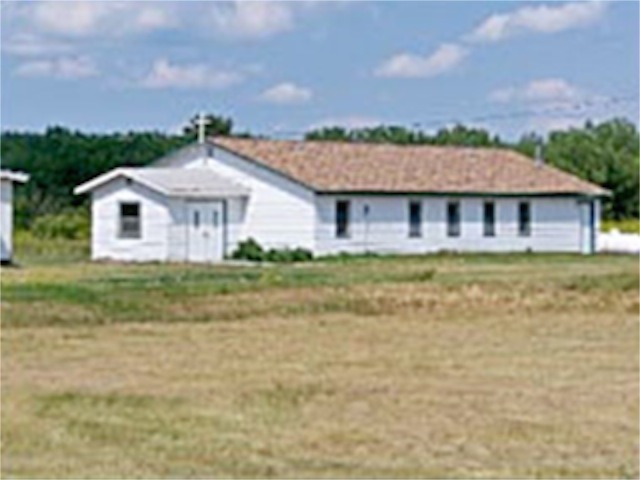
In the early 19th Century, following the famous haystack prayer meeting in 1806, the American Board of Commissioners for Foreign Missions sent missionaries to China, Hawaii, and other places, predominantly in Southeast Asia. The legacy of these missionaries is substantial. Schools and hospitals were started. The Bible was translated into native languages, including creating written languages in places where none existed before. We have many missionary partnerships that have endured for more than a century because of the self-sacrificing vision of early missionaries. But they also engaged in unfair land deals with indigenous peoples. The legacy is not only one of service, but also one of exporting culture, imposing rules and values that were foreign, amassing wealth at the expense of those who were served, and, in some cases, engaging in direct abuse those they sought to help.
Our work in Hawaii is a good example. Hawaii was among the first destinations for foreign missionaries sent by the Board. The missionaries taught the gospel, established schools and hospitals and served the people in many ways. They also participated in the overthrow of the historic monarchy. At one point Queen Liliuokalani was held against her will in the Congregational church while the government of Hawaii was taken over in a military coup. The illegal overthrow was undertaken in part to protect the property of non-indigenous people. Looking back, it is easy to see how the history of Hawaii was altered by the presence of the missionaries. The excesses of church people are well documented.
There is a great deal written about physical, sexual and cultural abuse that took place in boarding schools established to “serve” Native Americans and indigenous Canadians. The paternalistic approach of some of the zealous missionaries resulted in taking children out of loving families and placing them in isolation – sometimes hundreds of miles from home. Ignorance of native customs and a general cultural insensitivity resulted in destruction of families and the loss of language and other critical cultural traditions.
There are many other stories, too numerous for a single blog post, of times when good people, meaning well, participated in violence and destruction because of their cultural ignorance. Over the years many within our church have learned the hard way that there is a big difference between doing things for others and walking alongside them.
The legacy of paternalism in missionary activities continues to be a part of our relationships with Lakota, Dakota and Nakota people here in South Dakota. One of the issues that has consumed significant energy in recent years is the repatriation of land titles for our native congregations. The story is long and complex, but the titles to the land on which some of our Dakota Association churches stand as well as a few other plots of land donated to the church were at one time held in the offices of the American Missionary Association. The land was donated by native families, and sometimes by the tribe, for the establishment and support of churches. Because the newly formed congregations often lacked corporate status, the titles to the land were held by the missionary organization. In the early 1960’s the titles were transferred to the South Dakota Conference. These days it is clear that the titles should be held by the Dakota Association and the Board of Directors of the Conference has acted to transfer the titles to the Association. The transaction is not, however, going smoothly. There are costs associated with obtaining clear titles. There are encumbrances associated with some of the properties and some disputes over boundaries and other issues. It will take years to sort it all out.
A much less paternalistic style of working with people has emerged over the years. We have learned, as a church, to work as partners with others. When we walk alongside others and truly listen to their concerns, needs and wishes, we can become partners with them in doing the things that they want to do. It can be frustrating to work at the pace of a partner instead of our own. Sometimes things take longer. Sometimes the results are not the way we envisioned them. But the benefits of walking alongside others as opposed to “doing for” them are great. When we foster independence and listen to the needs and aspirations of others instead of assuming that we know what is best for them, we build healthy relationships. The process is long and requires patience. Quick fixes rarely are the right answer. God’s work happens in God’s time, not our own.
Yesterday I sat at a meeting as one of my colleagues announced that he was chairing a plan to build a new church for one of our Dakota Association congregations. He plans to do an eight-day blitz build in September. He announced the names of the people he had recruited to do the construction. I nearly wept as I listened to him talk. He was excited. The church lost their fellowship hall in a fire and will soon have funds from the insurance. Their dream is to build a new sanctuary and convert the old sanctuary to a fellowship hall. Our colleague has had a few conversations with our partners and has decided that he knows what is best for them. He is able to organize workers, import labor and materials and he has a vision. He seems to have forgotten that the insurance money from the building that burned down is not his to spend. He seems to have forgotten that the church is located in a rural area where the unemployment rate is over 80%. Importing volunteers sounds like a good idea when you don’t think of the local people who need jobs. He seems to have forgotten that the design of a church building requires careful listening to the members of the church about what they want and how they will use the building. As he reeled off the names of those he was organizing to work, he failed to notice that there were no Natives and no members of the congregation he wants to “serve” on his list. He has no idea of the on-going maintenance costs of the building he proposes. He has given no thought as to who will pay the increased insurance, energy and maintenance costs “his” new building will impose on the small congregation.
I’ve been around the church long enough to know that the enthusiasm of the moment is rarely the path to the future. I bit my tongue and didn’t speak up. I know that the long-term investments we make in on-going relationships are worth a lot more than the temporary passions of a “do gooder.” But it is frustrating to think that there are those who have learned nothing from the mistakes of the past. One thing I am beginning to learn from decades of walking and working with our partners is that the future does not rest on what happens in eight days in September.
Those who are willing to commit decades and lifetimes to on-going relationships will continue to live out the gospel of Jesus Christ. And over and over again we will repeat the painful process of cleaning up the mess left behind by the “hit and run” missionaries who show up to work for a few days and go back home feeling good about themselves.
Copyright © 2013 by Ted Huffman. I wrote this. If you want to copy it, please ask for permission. There is a contact me button at the bottom of this page. If you want to share my blog a friend, please direct your friend to my web site.
First paddle 2013
05/05/13 05:09
Today is Placerville Sunday at our church. It is a celebration and promotion of our church camp. Placerville is located in an absolutely gorgeous location in the heart of the Black Hills, right next to Rapid Creek below Pactola Dam. The Camp is well managed with a small board and an experienced director who fulfills roles as diverse as maintenance man, cook, janitor, groundskeeper, and program director with equal grace. We are very fortunate to have the camp and to have is so well staffed. But Placerville shares some features with other church camps across the nation. The number of campers has declined with increased pressures on the schedules of families from other activities. Family sizes are considerably smaller these days than they were in the 1950’s and the camp has to be innovative in its marketing to develop and discover new ways to use the facility to reach people.
Church camp experiences are an important part of my personal story. My parents took me to church camp as an infant and every year of my growing up life. We attended family camp every year and when I became old enough I attended the age-specific camps. I met my wife at church camp. It was at church camp where I discovered the first inklings that the ministry would be my vocation. Many important faith formation experiences occurred while participating in the programs of our camp. As an adult, I have continued to be active in church camping programs and activities.
I know that experiences in the outdoor world can be important faith formation experiences. I find going out into God’s world to be critical to the nurturing of my spirit and maintaining balance in my life.
 Yesterday was a bit late for the first paddle of the season, but April weather around here wasn’t the best for heading to the lake. I’ve been busy and I had a lot of activities planned for the morning, but in the afternoon I was able to sneak out to the lake for an hour of paddling. I wasn’t the only one with the idea. I often paddle first thing in the morning and am used to having the lake to myself, but there was a canoe and a couple of motor boats on the lake when I arrive and the shoreline was dotted with fishermen. The water is cold and options for self-rescue are limited if I were to capsize. There is little danger with a kayak on flat water, but I stayed close to the shore just to keep things on the safe side.
Yesterday was a bit late for the first paddle of the season, but April weather around here wasn’t the best for heading to the lake. I’ve been busy and I had a lot of activities planned for the morning, but in the afternoon I was able to sneak out to the lake for an hour of paddling. I wasn’t the only one with the idea. I often paddle first thing in the morning and am used to having the lake to myself, but there was a canoe and a couple of motor boats on the lake when I arrive and the shoreline was dotted with fishermen. The water is cold and options for self-rescue are limited if I were to capsize. There is little danger with a kayak on flat water, but I stayed close to the shore just to keep things on the safe side.
The motor boaters both had new high-powered ski boats. I imagine that they were purchased last fall or early this spring. The owners had been chomping at the bit for a day to take them to the lake and try them out. The sound of their deep-throated engines echoed off of the hillsides as they roared around the lake. But it was too cold for water skiing yesterday. And Sheridan Lake is a bit small for such fast boats. One of the boats had the stereo turned up loud so that they could hear it over the roar of the engine. I suspect that they, like some of the shore fishermen, didn’t know or had forgotten how sound travels over the surface of the water. I know their musical preferences as does probably everyone else who went to the lake, with the possible exception of the folks on the other motorboat, whose engine was pretty loud by itself. A couple of trips around the perimeter of the lake and the folks in the motorboats had done what they could at the lake. They idled their boats to a calm cove and sat bobbing on the water and talking to each other.
The canoeist was a fisherman who happened to own a canoe, not a canoeist who happens to have a fishing pole, if you know the difference. He was trolling by back paddling across the lake and switched his paddle from side to side nearly every stroke in order to maintain a straight line. He had a fancy fishing chair in his boat with a sturdy back and was concentrating more on his fishing equipment than on his paddling technique. No worries. Canoes are great at teaching their users how to paddle. Often no instruction is necessary. After a while, he’ll get tired of the drips from his paddle as he switches it from side to side and will discover how to make a simple J stroke or apply a small pry or draw occasionally to allow himself to go where he wants without having to lift his arms so high on every stroke.
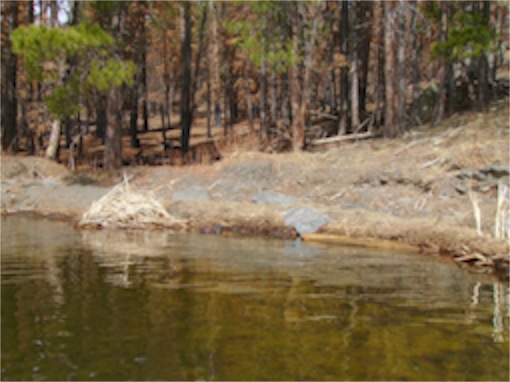 Usually when I go to the lake for my first paddle, I arrive on a Monday morning, Mondays being my day off. I’ve been otherwise occupied on Mondays recently so I was there on a Saturday afternoon which meant that the wildlife that I was observing wasn’t so much the eagles and beaver and ducks and other residents of the area, but rather the people who had come to the lake to play and fish. There was a small group fishing together with several in boy scout uniforms. I haven’t kept up with the requirements for the fishing merit badge these days, but I know that it requires the scout to catch at least one fish, clean and cook it. It used to require that the scout knew how to remove a fish hook that lodges in the skin of another scout. Usually fishing in clumps provides the scouts with opportunities to demonstrate that skill to their scoutmasters. I didn’t see either kind of catching going on while I paddled by. They waved. If I had brought a canoe, I could have offered to help them work on their canoe merit badge as well. That badge requires demonstration of strokes that the canoe fisherman wasn’t showing.
Usually when I go to the lake for my first paddle, I arrive on a Monday morning, Mondays being my day off. I’ve been otherwise occupied on Mondays recently so I was there on a Saturday afternoon which meant that the wildlife that I was observing wasn’t so much the eagles and beaver and ducks and other residents of the area, but rather the people who had come to the lake to play and fish. There was a small group fishing together with several in boy scout uniforms. I haven’t kept up with the requirements for the fishing merit badge these days, but I know that it requires the scout to catch at least one fish, clean and cook it. It used to require that the scout knew how to remove a fish hook that lodges in the skin of another scout. Usually fishing in clumps provides the scouts with opportunities to demonstrate that skill to their scoutmasters. I didn’t see either kind of catching going on while I paddled by. They waved. If I had brought a canoe, I could have offered to help them work on their canoe merit badge as well. That badge requires demonstration of strokes that the canoe fisherman wasn’t showing.
Some of the solitary fishermen were out there for solitude and I respect it by not talking, but just waving. Some waved back. Some didn’t.
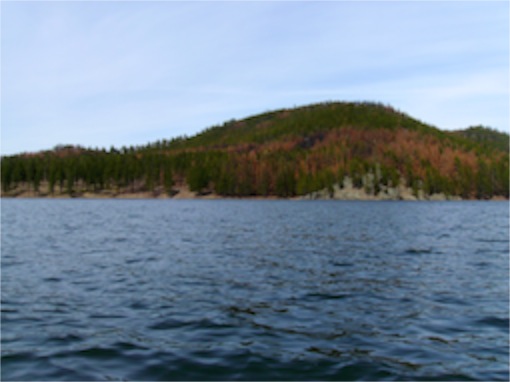 It was a good day for a first paddle and a good first paddle for the season. I’m itching to get out in a canoe. It is a different kind of paddling and I’ve been working on mastering Canadian style paddling recently. Of course one never really masters a life skill like paddling. You just keep refining it.
It was a good day for a first paddle and a good first paddle for the season. I’m itching to get out in a canoe. It is a different kind of paddling and I’ve been working on mastering Canadian style paddling recently. Of course one never really masters a life skill like paddling. You just keep refining it.
As I loaded my boat back onto my car, I was grateful for the day and grateful for the place. I also know that the skill of sharing the lake with others is essential. I suspect that all of the people at the lake yesterday needed to get out to the lake as much as I did.
Church camp experiences are an important part of my personal story. My parents took me to church camp as an infant and every year of my growing up life. We attended family camp every year and when I became old enough I attended the age-specific camps. I met my wife at church camp. It was at church camp where I discovered the first inklings that the ministry would be my vocation. Many important faith formation experiences occurred while participating in the programs of our camp. As an adult, I have continued to be active in church camping programs and activities.
I know that experiences in the outdoor world can be important faith formation experiences. I find going out into God’s world to be critical to the nurturing of my spirit and maintaining balance in my life.

The motor boaters both had new high-powered ski boats. I imagine that they were purchased last fall or early this spring. The owners had been chomping at the bit for a day to take them to the lake and try them out. The sound of their deep-throated engines echoed off of the hillsides as they roared around the lake. But it was too cold for water skiing yesterday. And Sheridan Lake is a bit small for such fast boats. One of the boats had the stereo turned up loud so that they could hear it over the roar of the engine. I suspect that they, like some of the shore fishermen, didn’t know or had forgotten how sound travels over the surface of the water. I know their musical preferences as does probably everyone else who went to the lake, with the possible exception of the folks on the other motorboat, whose engine was pretty loud by itself. A couple of trips around the perimeter of the lake and the folks in the motorboats had done what they could at the lake. They idled their boats to a calm cove and sat bobbing on the water and talking to each other.
The canoeist was a fisherman who happened to own a canoe, not a canoeist who happens to have a fishing pole, if you know the difference. He was trolling by back paddling across the lake and switched his paddle from side to side nearly every stroke in order to maintain a straight line. He had a fancy fishing chair in his boat with a sturdy back and was concentrating more on his fishing equipment than on his paddling technique. No worries. Canoes are great at teaching their users how to paddle. Often no instruction is necessary. After a while, he’ll get tired of the drips from his paddle as he switches it from side to side and will discover how to make a simple J stroke or apply a small pry or draw occasionally to allow himself to go where he wants without having to lift his arms so high on every stroke.

Some of the solitary fishermen were out there for solitude and I respect it by not talking, but just waving. Some waved back. Some didn’t.

As I loaded my boat back onto my car, I was grateful for the day and grateful for the place. I also know that the skill of sharing the lake with others is essential. I suspect that all of the people at the lake yesterday needed to get out to the lake as much as I did.
Copyright © 2013 by Ted Huffman. I wrote this. If you want to copy it, please ask for permission. There is a contact me button at the bottom of this page. If you want to share my blog a friend, please direct your friend to my web site.
The name of a place
04/05/13 04:53
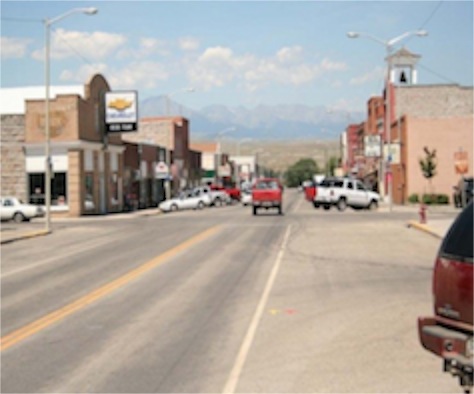
Other place names in the area seem to make sense. Froze to Death Creek and Dead Horse Creek need no explanation. Neither does the Boulder River, though there are enough rivers that roll around their boulders at high water that Montana has at least two that share the name – far less than the number of Green Lakes, which might be a bit less than the number of Blue Lakes.

Then we moved to Hettinger, named after a lesser railroad employee and from their to another tree town. Boise is said to have gotten its name from the French trappers who exclaimed, “Les Bois! Les Bois!” when they saw the trees alongside the river. Presumably they approached from the desert to the south rather than the mountains to the north of town. The trees aren’t all that spectacular, but if you spend enough time in the desert any tree is worthy of note.
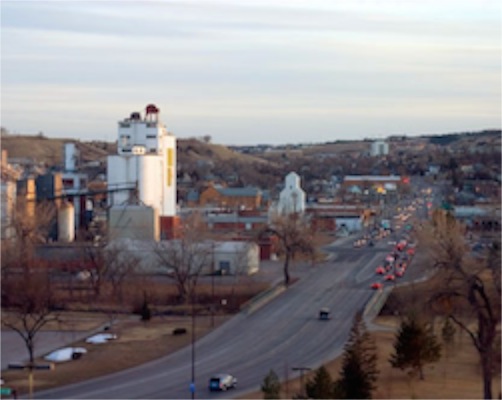

Speaking of place names, Albuquerque is a quirky name . . .
Copyright © 2013 by Ted Huffman. I wrote this. If you want to copy it, please ask for permission. There is a contact me button at the bottom of this page. If you want to share my blog a friend, please direct your friend to my web site.
Nacho-inspired meditation
03/05/13 05:54

Words fascinate me. I suppose it is natural for one who uses so many of them to have a sort of affinity for words and their origins. In the past I have written blog posts about the Oxford English Dictionary and other topics familiar to wordsmiths. Today’s entry is simply a bit of playing with words that sound good when I say them out loud.
We received a graduation announcement this week from a high school senior. Along with the usual announcement of the graduation ceremony was an invitation to attend a Nacho Bar at the home of the graduate. I know what to expect when attending the party. There will be plenty of tortilla chips and a lot of different toppings for them. Principal among the toppings will be a cheese sauce, but there are likely to be a lot of other options, including ground beef, lettuce, olives, onions, pico de gallo, beans, tomatoes and sour cream. So I got to wondering where the name Nacho comes from. Actually, I was wondering if the name Nacho refers principally to the chips, or to the cheese sauce, or to the combination of all of the ingredients. Are nachos any dish that starts with the chips and uses the chips as the primary utensil for getting the food to the mouth?
Wikipedia credits the origin of the dish to Ignacio Anaya. It is pretty simple to assume that the name of the dish came from the first name of its inventor. Ignatio to nacho isn’t a very big trip linguistically. Ignation Anaya was a Mexican chef who worked on the north-east border of Mexico in the 1940’s. The online etymology dictionary credits the “Dallas Morning News” issue from October 22, 1995 as naming the cook as inventor of the dish in Piedras Negras in 1943. The Oxford English Dictionary , however, doesn’t share the conviction that such an origin is the only possible source. It simply states that it is a possible source of the word, but that more research is needed. That made me wonder how one gets the job as a word origins researcher. I would be willing to go through books and newspapers and visit restaurant after restaurant ordering nachos if it would contribute to the education of the world. Heck, a lot of writers would got through a lot to get their name into the Oxford English Dictionary.
The job is going to open relatively soon. John Simpson has announced that he will be retiring as Chief Editor of the Oxford English Dictionary after 37 years working on that famous reference. Being a word sleuth could be quite an adventure. After all the OED goes far beyond simply providing definitions. I suppose that not every word has a complex history, but plenty of them do.
WD40 is simply the 40th formula for a Water Dispersant Lubricant that was tried. Forty seemed to be the trick and the name stuck. The formula has stayed the same as well. But there are lots of other words that aren’t so simple to fathom. Take for example the common name we give to the motorized vehicles we drive. The most common term in our house is “car.” I suppose that car is short for carriage which was in turn shortened from horseless carriage, a term used to refer to the vehicles early in their history. In other parts of the world they are referred to as “autos,” which is shortened from automobile, itself a hybrid words with origins in the Greek autokineto, meaning “moved itself,” and the French locomobile.
Similar adventures can be had in researching the origins of almost any word in our language. And the fun thing about English is that we are so quick to adopt and adapt words from other languages. Nacho is a good example. Chances are the first person to coin the term was speaking Spanish, not English. Never mind, we love adopting words form other languages.
Here’s a term that you might not know. Etaoin shrdlu is an expression that once was common in newsrooms, but is no longer heard much at all. It is possible that even people who have read Anthony Burgess’ “Homage to Qweret Yuiop” don’t know that term. Burgess wrote essays on a wide range of subjects in his collection – probably as diverse as the topics of my blog. He wrote about the movie business, about authors, about travel, culture, languages and literature and a whole lot more. But the Hungarian man named Qwert Yulop is, I believe, pure fiction. If you use a standard keyboard, you’ll recognize the spelling of his name as the top ten letters of a standard keyboard in their original order from left to right. Etoain shrdlu, by the way are the first two rows of a Linotype machine from top to bottom. No one uses Linotype machines any more. It simply means “garbled type” something that may be a bit less common in the days of Microsoft Word’s spellcheck function, but computers have not saved us from garbled thinking or misplaced words.
For what it is worth, I won’t be submitting my resume for the position of the Chief Editor of the Oxford English Dictionary, as interesting as the job seems on the surface. In the first place, I am sure that I am not qualified. One has to have a lot more experience with editing that I have and a lot more knowledge on how to research word origins. I’m pretty sure that the OED doesn’t rely on Wikipedia and the Online Etymology Dictionary as primary sources.
Besides, I think the job is one for a younger person. After all the third edition of the OED is not expected to be complete until 2037. By then, I’ll be 84. That may be deemed a bit too old for such a prestigious position.
More fruitful, perhaps, would be to begin saving so that I might buy a copy of the third edition. After all, I’ve wanted a copy of the second edition ever since it came out in 1989. Doesn’t everyone need a 20 volume dictionary? But the price, quite frankly, has deterred me so far. No point in buying books that will be obsolete so soon in any case. I wonder how many volumes the third edition will require.
In the meantime, I’m hungry for some Nachos.
Copyright © 2013 by Ted Huffman. I wrote this. If you want to copy it, please ask for permission. There is a contact me button at the bottom of this page. If you want to share my blog a friend, please direct your friend to my web site.
Time
02/05/13 05:31


Then you can get into conditional tenses. There are ways to use language to indicate what might, but not necessarily, will happen. All of the constructs of language to express time are an indication that there are different ways of viewing time.
While technological machines such as the metronome, clocks and other devices attempt to measure time as a constant; we do not experience it in that way. Our sense of the amount of time varies, depending on what activity occupies that time. An hour stuck in traffic feels longer than an hour playing with a grandchild. A week of vacation has a different temporal feel than a week waiting for results from medical tests.
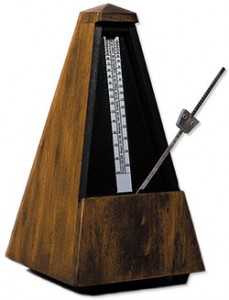
Astronomers use observations of the motions of stars and planets as their cue to the measurement of time. Days, seasons, and years are marked by the earth’s revolutions and its rotation around the sun.
Philosophers tend to use another measurement of time – the amount of time remaining in the span of an individual’s life. Since we all die, the amount of time we have left has a philosophical quality. That time, however, is unknown. The span of individual lives varies by decades.

Brain research has yielded some significant information about the process of aging. A recent article published in the journal “Nature” explores the hypothalamus as the control of the process of bodily deterioration we call aging. A team of scientists claim that they can speed up or slow down aging in mice by activating or inhibiting the brain signaling molecule NF-kB in the hypothalamus. The researchers have also discovered a hormone that seems to be a key to understanding and perhaps manipulating the process of aging.

I think that part of our questions and confusion about life span lies in our inability to truly understand time. The texts of our faith indicate that the flow of time is entirely different from a divine perspective than that of humans. The psalmist declares, “A thousand years in thy sight is but as a watch in the night.” John’s vision understands Christ as the alpha and omega – the beginning and ending of all that is. Our creation stories indicate that God existed before time. If God is present in every moment, than time had an entirely different meaning. We get a few glimpses of that perspective from some of the stories of our people. Jesus’ transfiguration, for example, is an experience of past and present being simultaneous. Moses, Elijah and Jesus lived in different times, but they are revealed together in a single time and place.
I am convinced that our perception of time is a temporary phenomenon. It is important to us in this life, but of no meaning when we die. The time of our life is a preparation for what is yet to come. The length of a life is important only from our temporal perspective. The distinction between the death of an infant and the death of a centurion is insignificant from the divine perspective.
The question is not how much time we will be allotted, but rather what we will do with the time that we have.
Copyright © 2013 by Ted Huffman. I wrote this. If you want to copy it, please ask for permission. There is a contact me button at the bottom of this page. If you want to share my blog a friend, please direct your friend to my web site.
May Day 2013
01/05/13 05:41
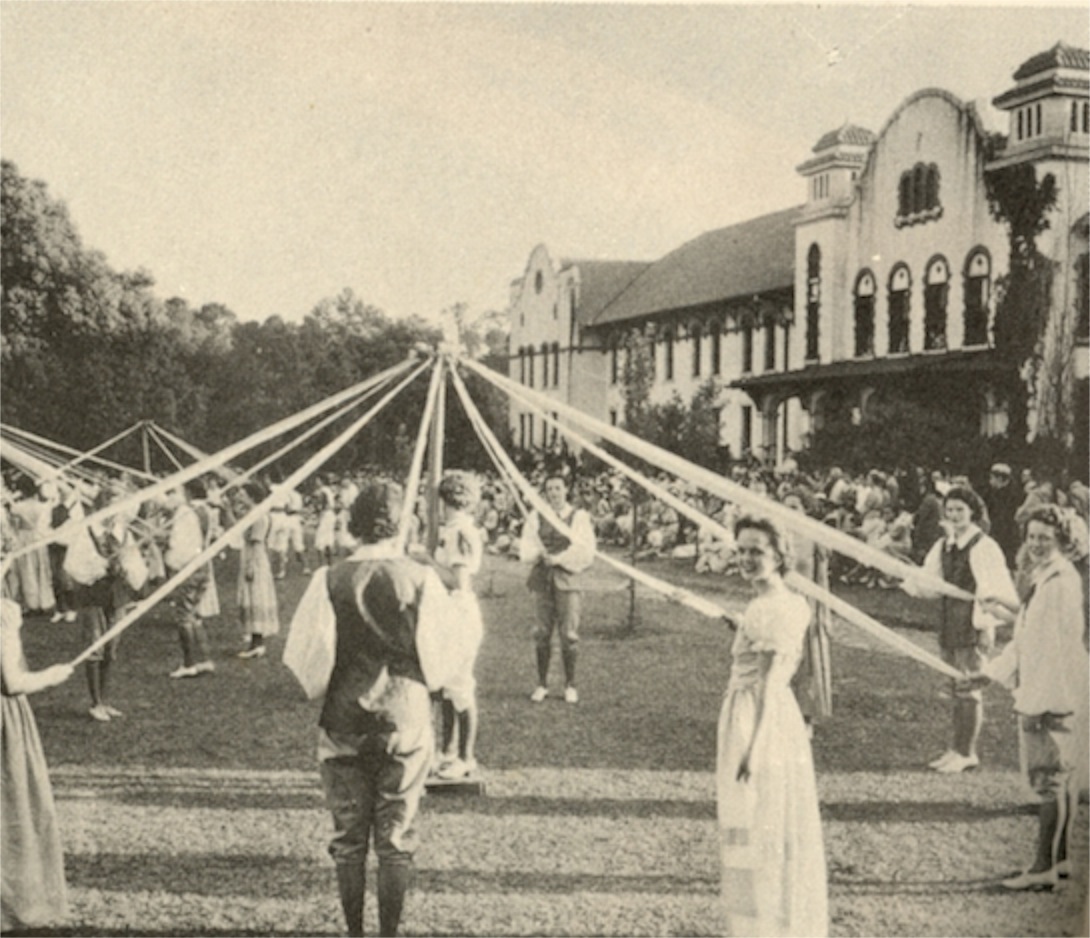
Happy May Day! It isn’t one of the big public holidays in this part of the world, but most of us have some memory of making up May baskets with spring flowers and delivering them to neighbors. There are some interesting old pictures of celebrations involving a May pole, but I’m not thinking that I’ll be seeing much of that kind of activity around here this year. The trees do appear to be ready to start to leaf out and spring seems to be getting underway but with blizzards and cold temperatures in the past three weeks, we’re a bit slow with spring this year.
May Day celebrations date back to pre-Christian times. The Romans celebrated Flora, the goddess of flowers. In Europe before the coming of Christianity, May 1 was often observed as the beginning of summer. June 21, the day we recognize as the beginning of summer, was declared to be midsummer in those cultures and times. With the coming of Christianity, May Day celebrations tended to focus more and more on Mary, the mother of Jesus. In some places May is observed as Mary’s’ month. In some places a crown of flowers is made to place on statues of Mary.
It seems appropriate for us to celebrate May Day as the beginning of spring around here. The grass is green, the temperatures have been rising and our thoughts are turning to gardens after a winter that was mild and dry, but ended with he flourish of three spring blizzards in the last three weeks of April.
In more than 80 countries around the world the First of May is recognized as International Workers’ Day. Although often associated with communism, the holiday has a distinctly American heritage. In 1888, police were trying to disperse a gathering of people during a general strike in the city of Chicago. The strike was an attempt to institute an eight-hour workday. What actually happened is unclear and we may never fully know the details but at some point in the demonstration a bomb was thrown and the police reacted by firing directly into the crowd. Hundreds of rounds were fired and four demonstrators were killed. The tradition of lighting bonfires on May 1 in memory of those killed spread around the world as did the call for an eight-hour workday.
These days we forget how hard-fought were the battles to achieve such things as a regular days off for workers, a reasonable amount of time off each day for rest and family, health and retirement benefits and other things that we take for granted. Here in the United States the observances of Labor Day have largely moved to September.
There is, however, a continuing need to remember workers around the world. There remains much work to be done to assure the safety of workers. Two weeks ago, while the attention of the international media was focused on Boston and the Marathon bombings, an eight-story garment factory near Dhaka in Bangladesh collapsed. More than 400 bodies have so far been pulled from the rubble, with more than 600 people still unaccounted for. The building was a clothing factory. It will go down in history as the worst accident to date in the clothing industry.
It is worse than the 1911 Triangle Shirtwaist Factory fire in New York City, which led to better conditions in United States sweatshops.
It is worse than the 1993 Bangkok toy factory fire, which killed 188 workers, mostly women and teenage girls, after the stairwells collapsed and fire exits were blocked.
It is worse than the Ali Enterprises factory fire in Pakistan last September where 289 people died.
It is worse than the Tasreen Fashions factory fire in November, which killed at least 112 people.
Horrible accidents are becoming more and more common as sweatshops in impoverished countries manufacture ever-cheaper garments for our markets. Bangladeshi manufacturing is an $18 billion business. Textile jobs have been moving to that country from China because of even cheaper labor.
The workers in the factory were earning an average of $37 per month.
There is something wrong with a world where people risk their lives and die in unsafe conditions for pennies per day so that we can have cheap t-shirts. The global search for the lowest wages has made us a part of the problem. “Always low prices,” means low wages. Our constant supply of inexpensive consumer goods comes at a terrible expense for workers in other places.
And sometimes it seems as if we don’t care.
I understand our attention on the Boston Bombings. I have been reading article after article about what occurred there. I have no understanding of the mind of a terrorist and am horrified by those who place bombs that are assured to claim innocent lives. The bombings were the first terror attack on U.S. soil since the attacks of 9/11. The deaths of three innocents in the blasts and the death of a brave MIT police officer are appalling. The injuries of more than 260 cannot be ignored. We mustn’t forget that there are still 20 people in the hospital as a result of the blasts.
But more than $30 million has been raised to assist victims and the American Orthotics & Prosthetic Association is creating a coalition to help victims with their medical expenses. The country has rallied in support of the victims of this senseless act. Terrorism is unquestionably an evil in our world.
But so is the abuse of workers in near-slavery conditions. And the quest for cheap consumer goods has lead to far more injuries and deaths than the crimes of terrorists.

So it seems appropriate this May Day to shed a tear with the families of those missing and feared dead in the Bangladesh garment factory. It seems right to confess the link between our buying patterns and the tragedy in a distant land. It seems necessary to work for changes in a world that still is home to great evil and injustice.
May we remember the work of those who make the things we use as we celebrate May Day this year.